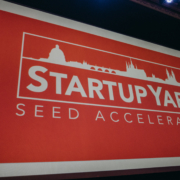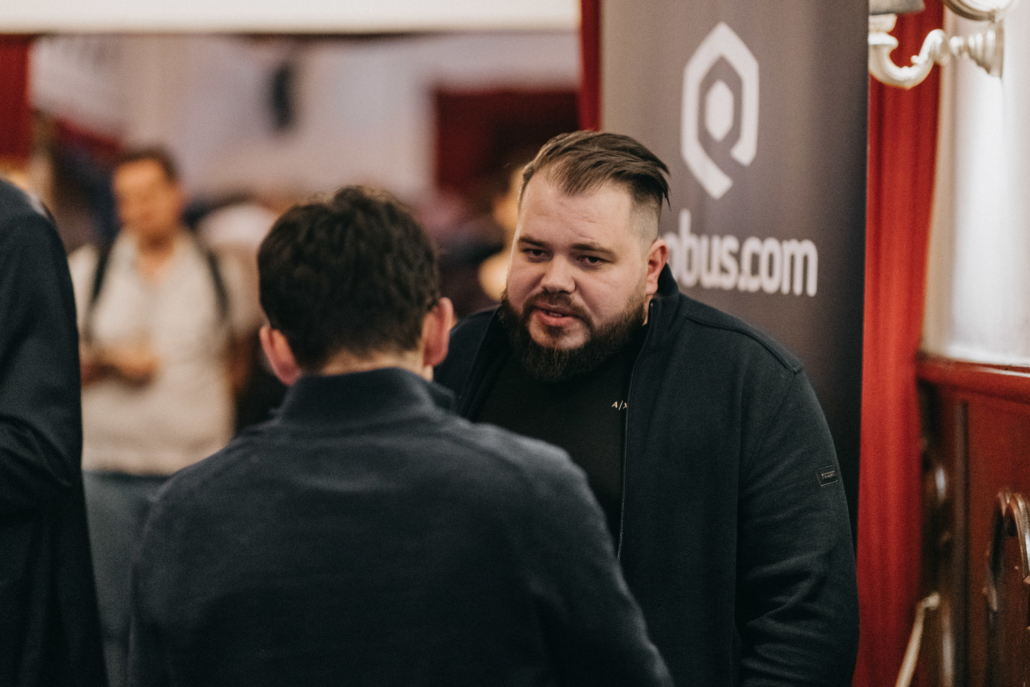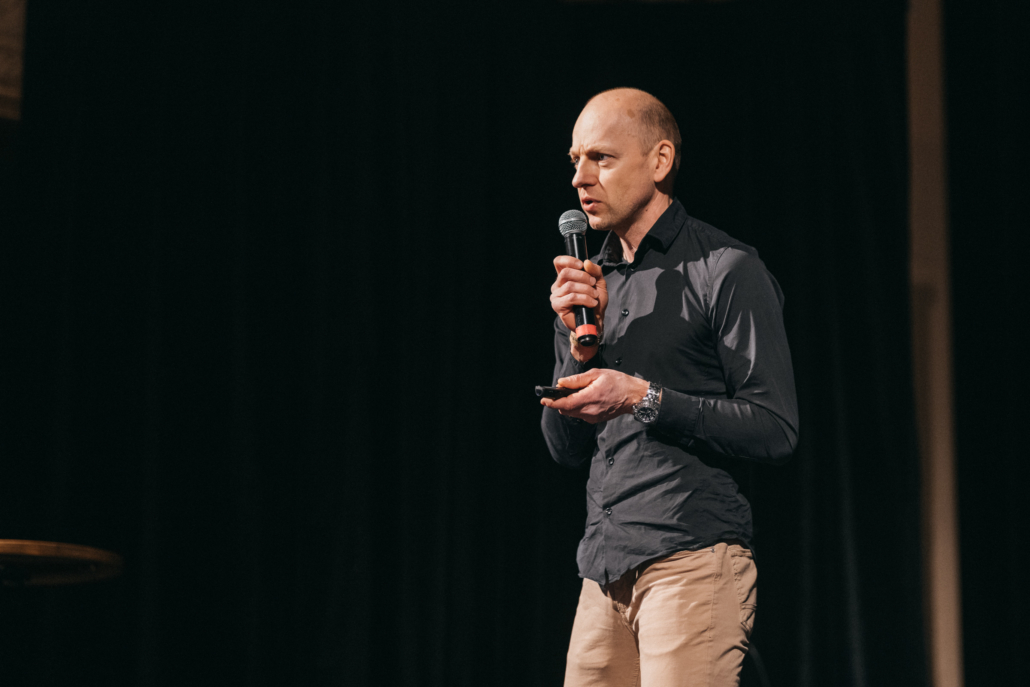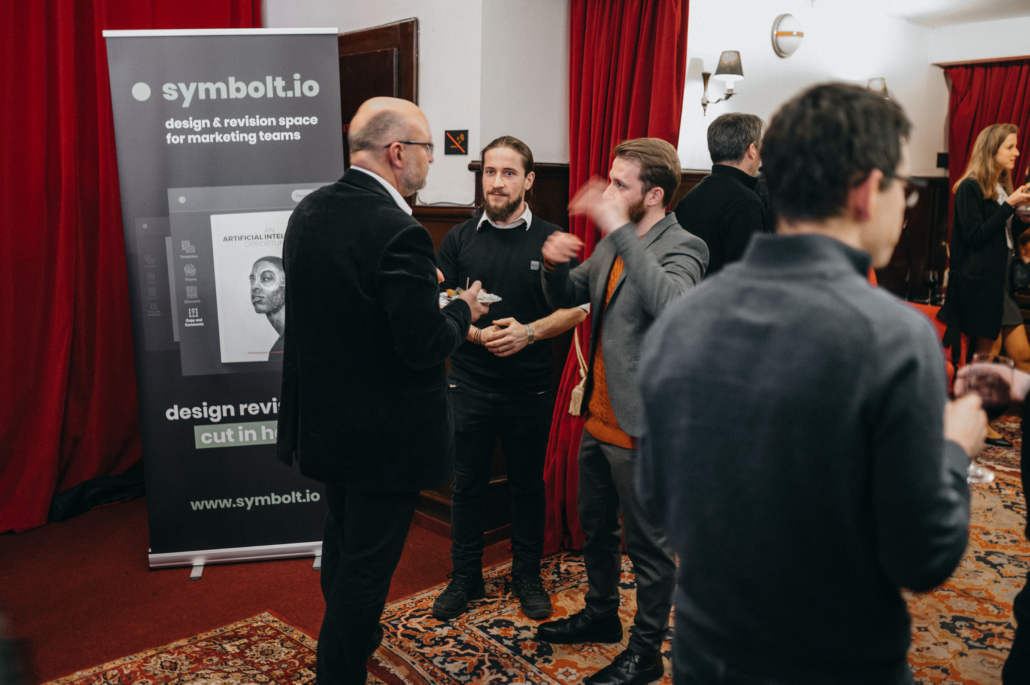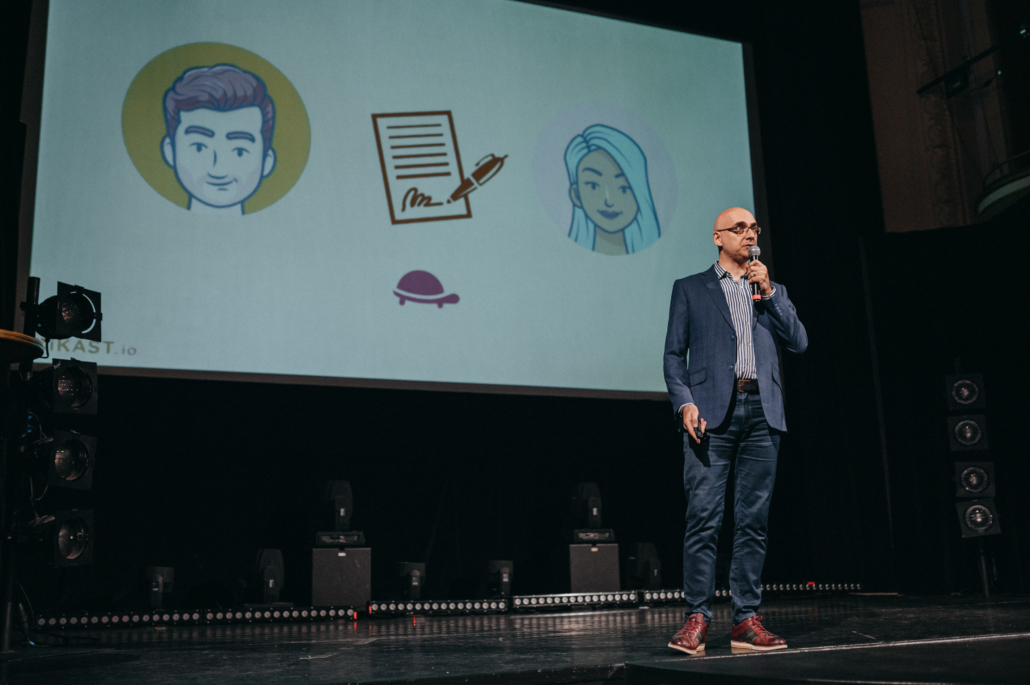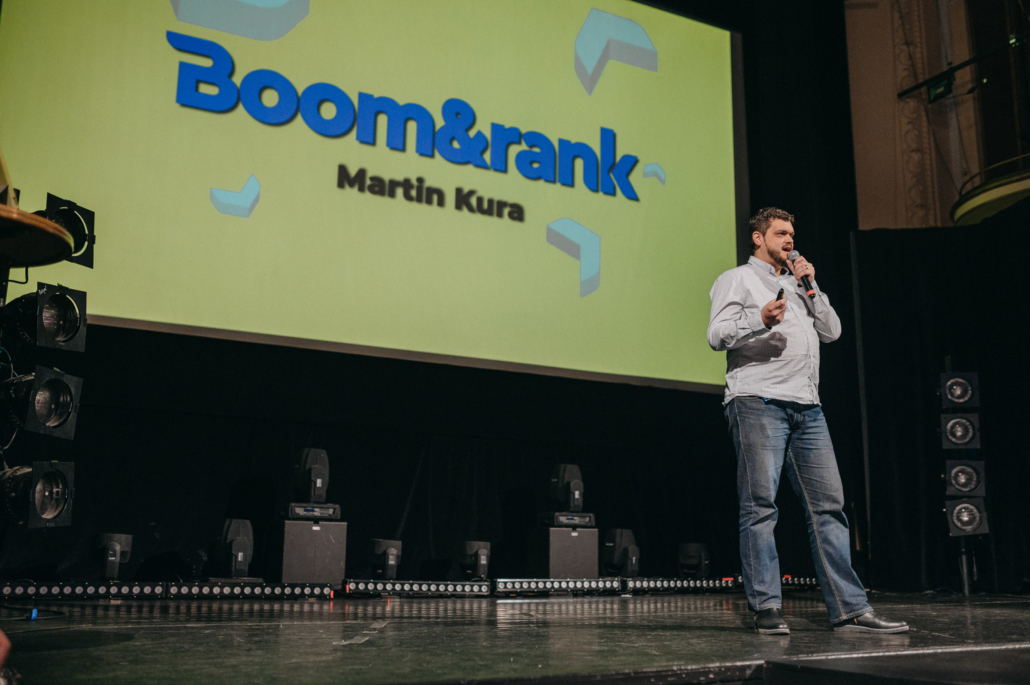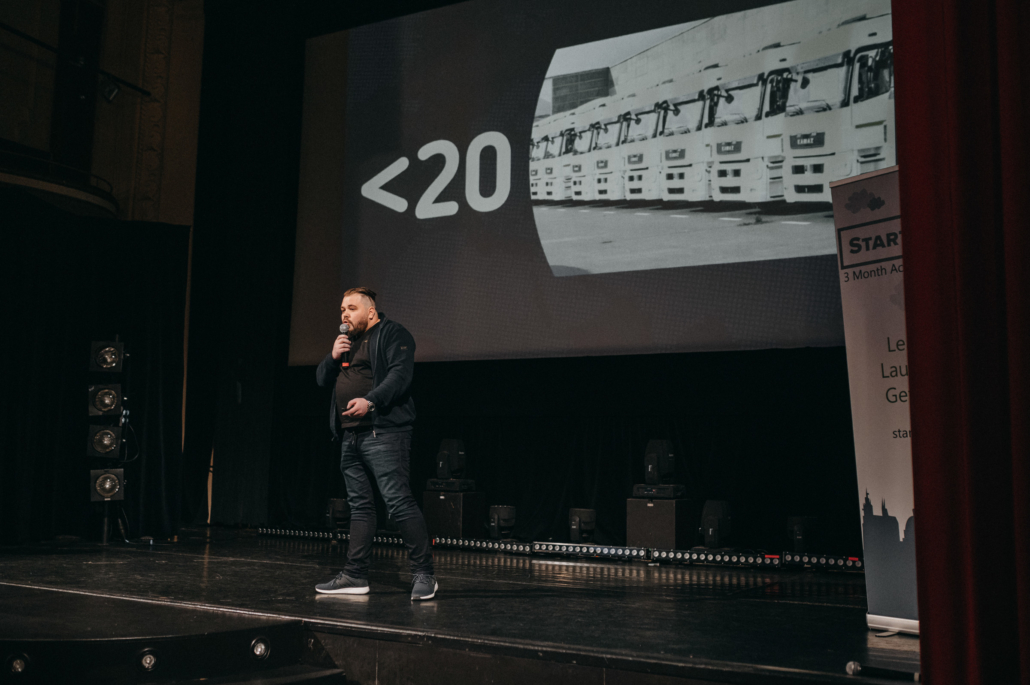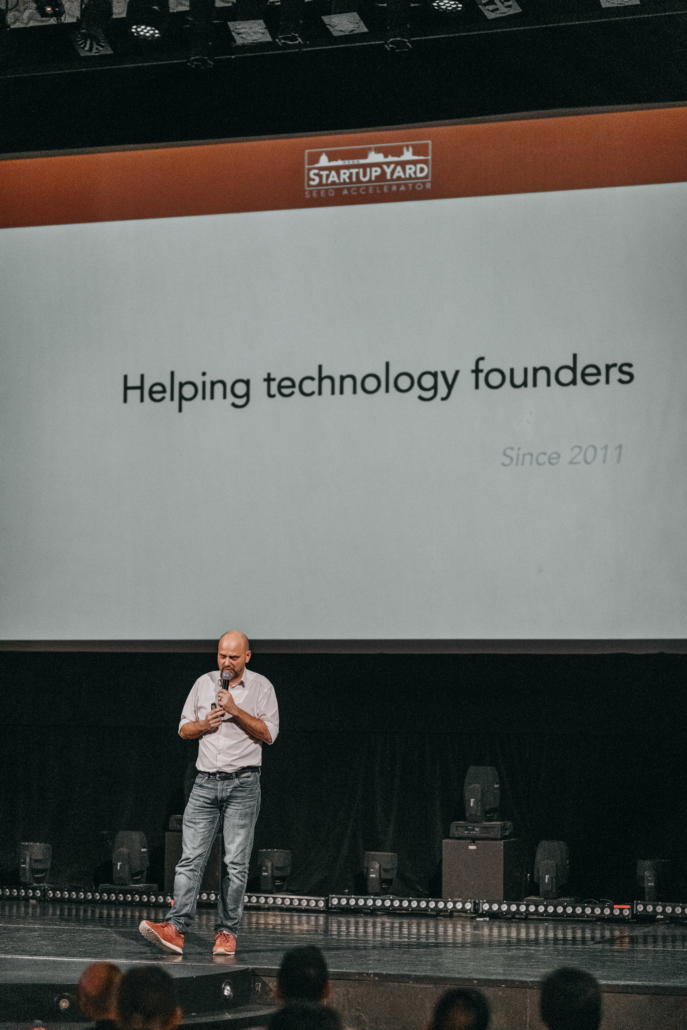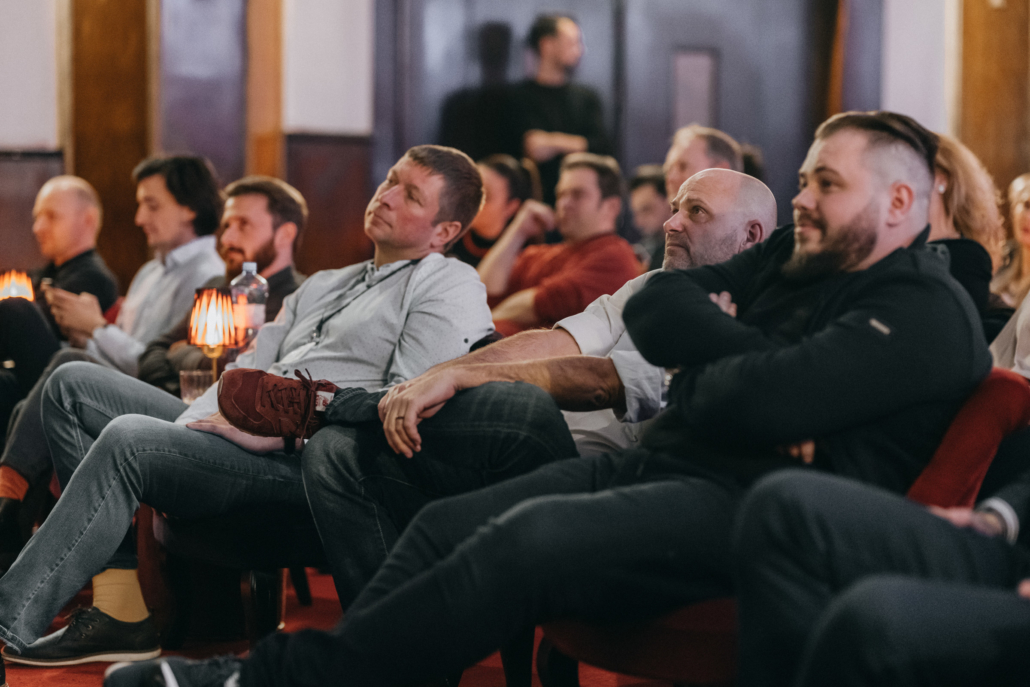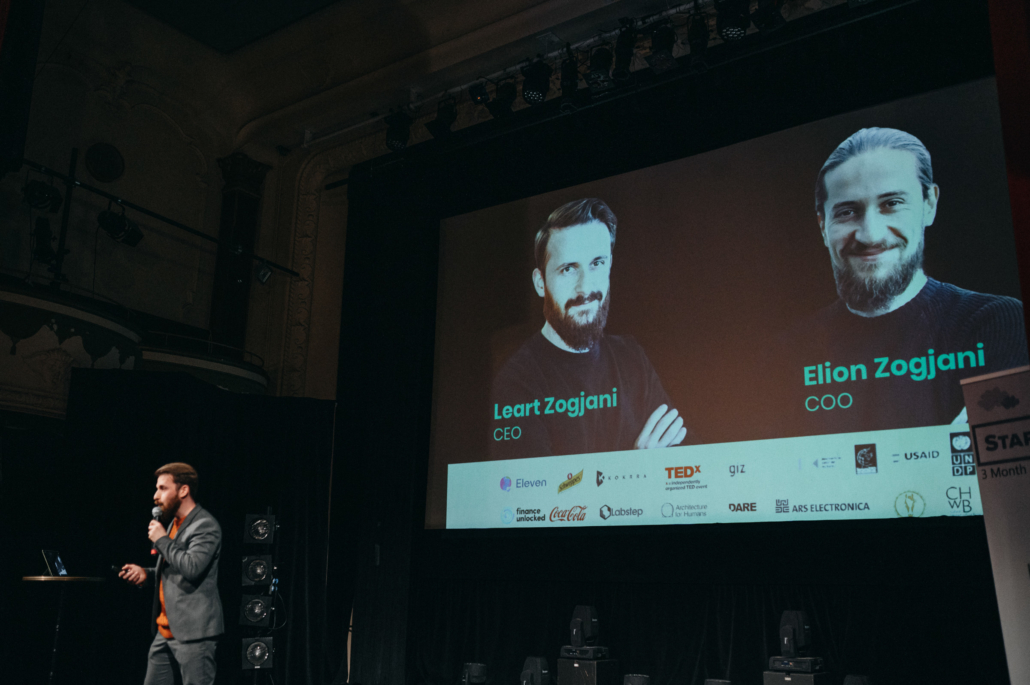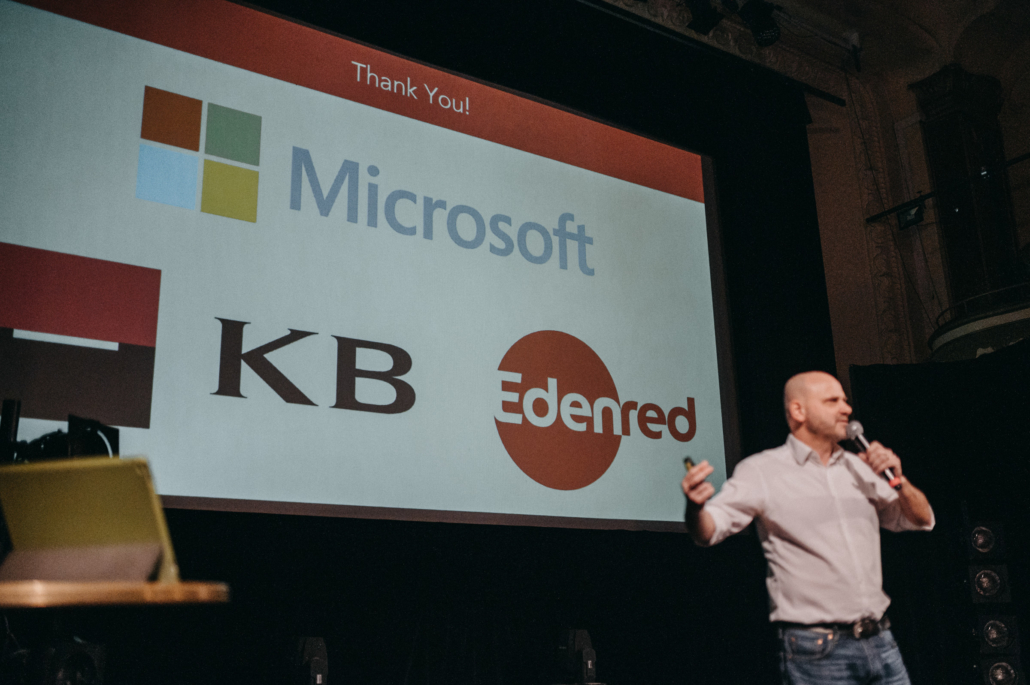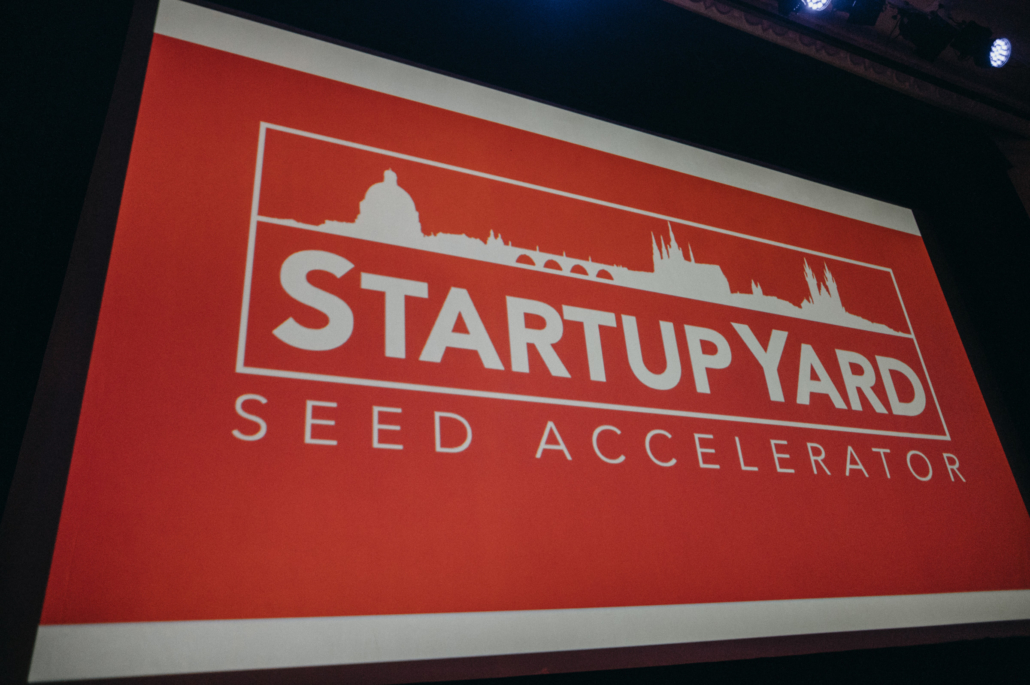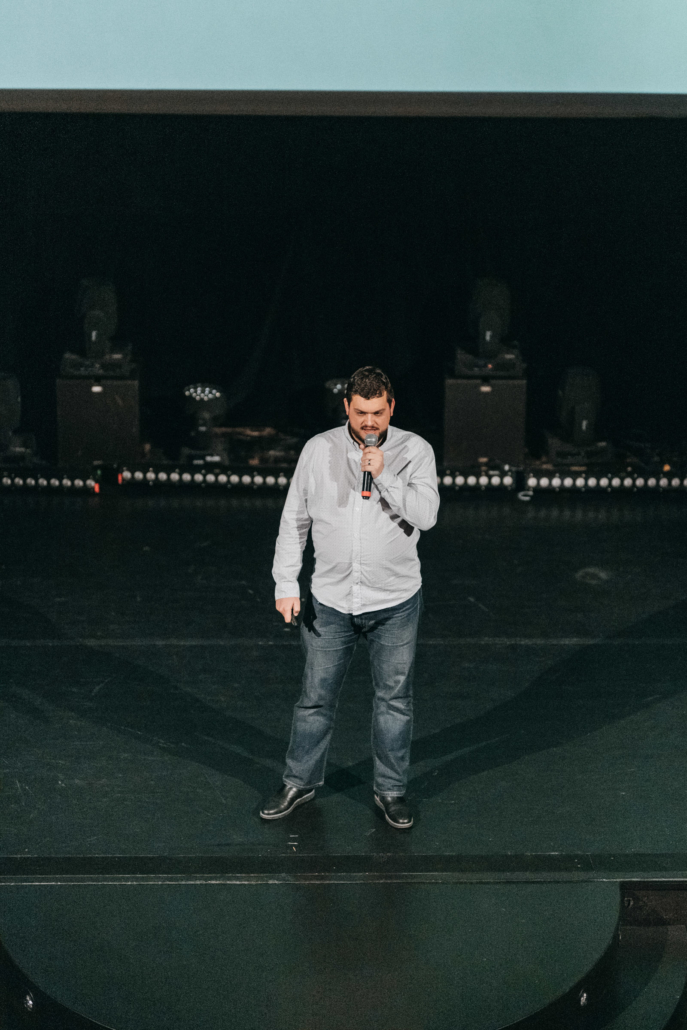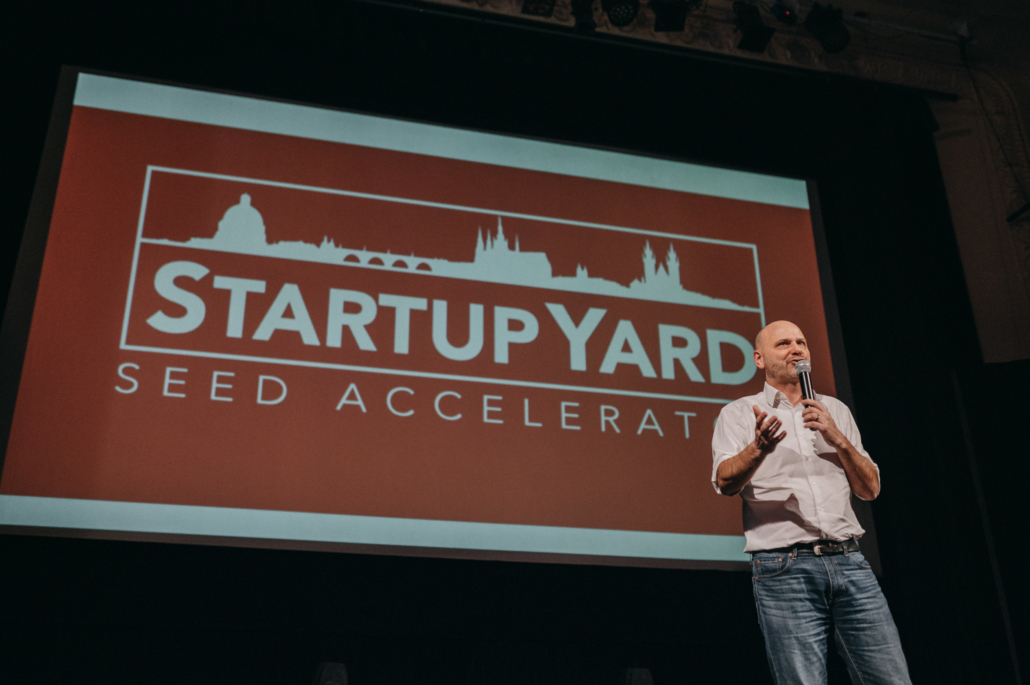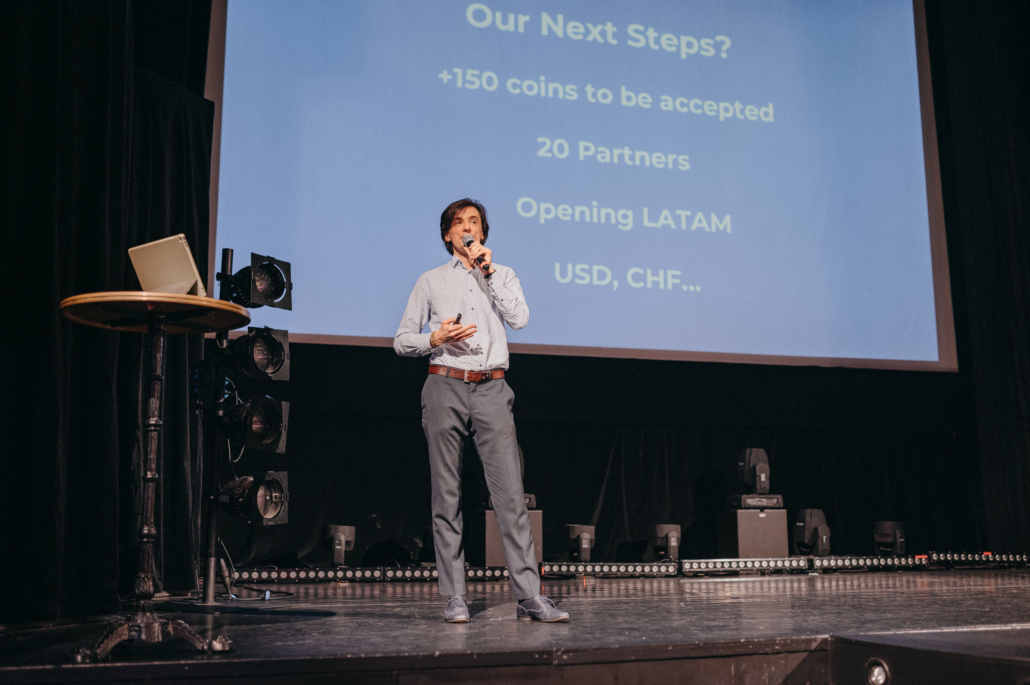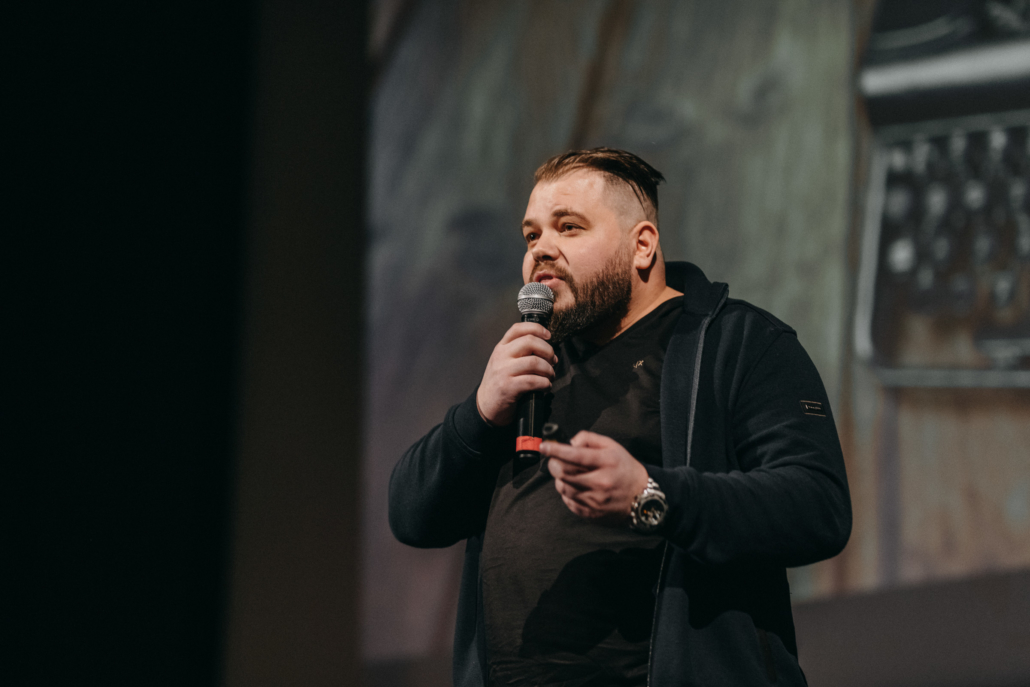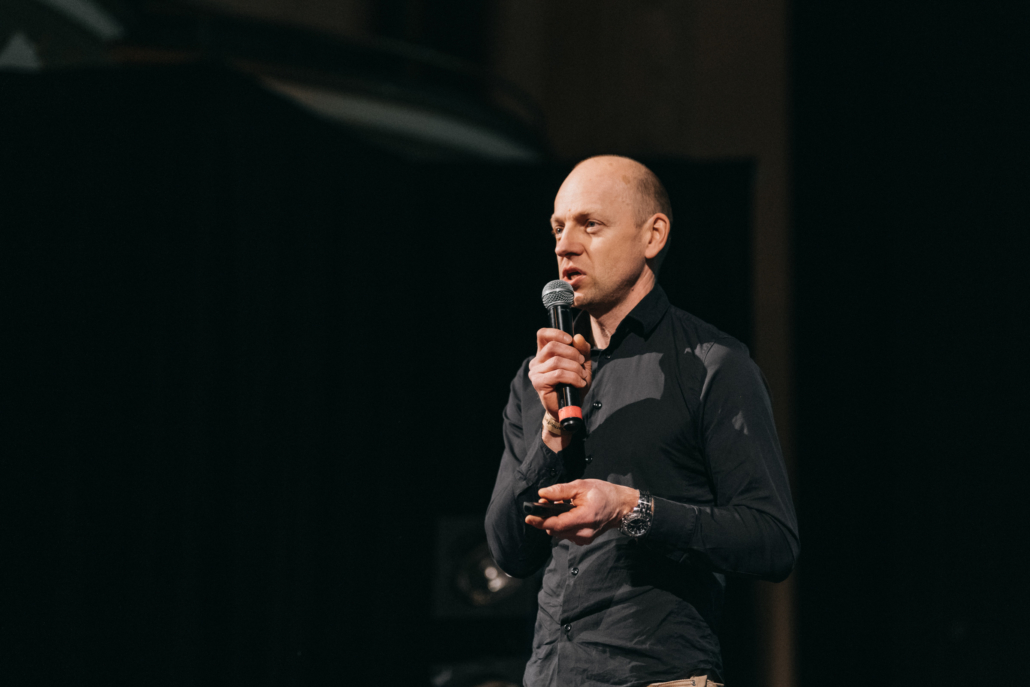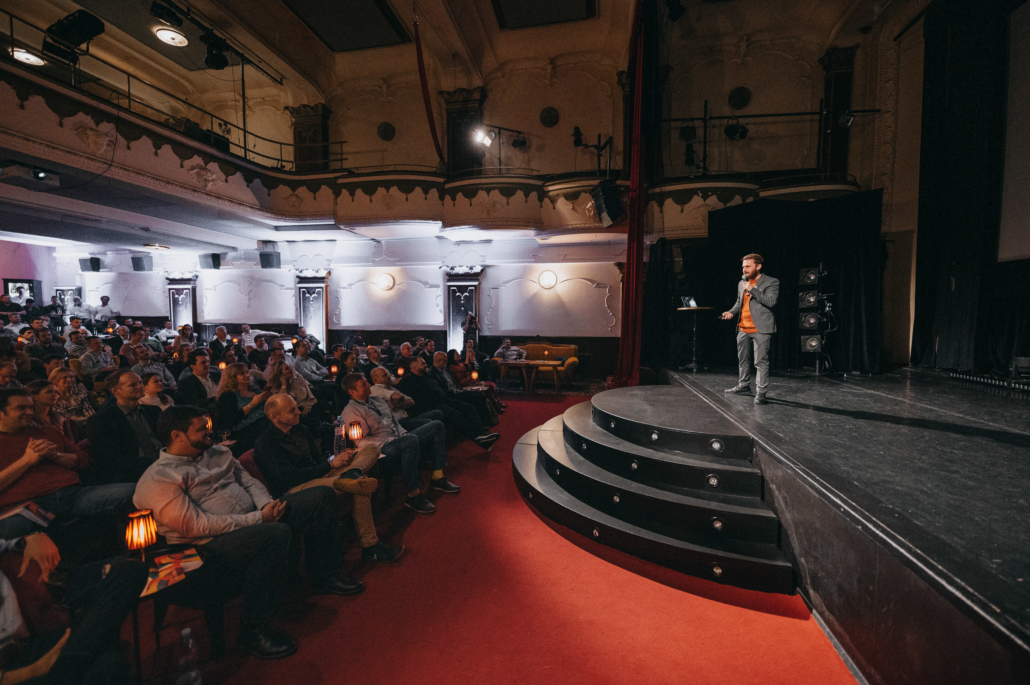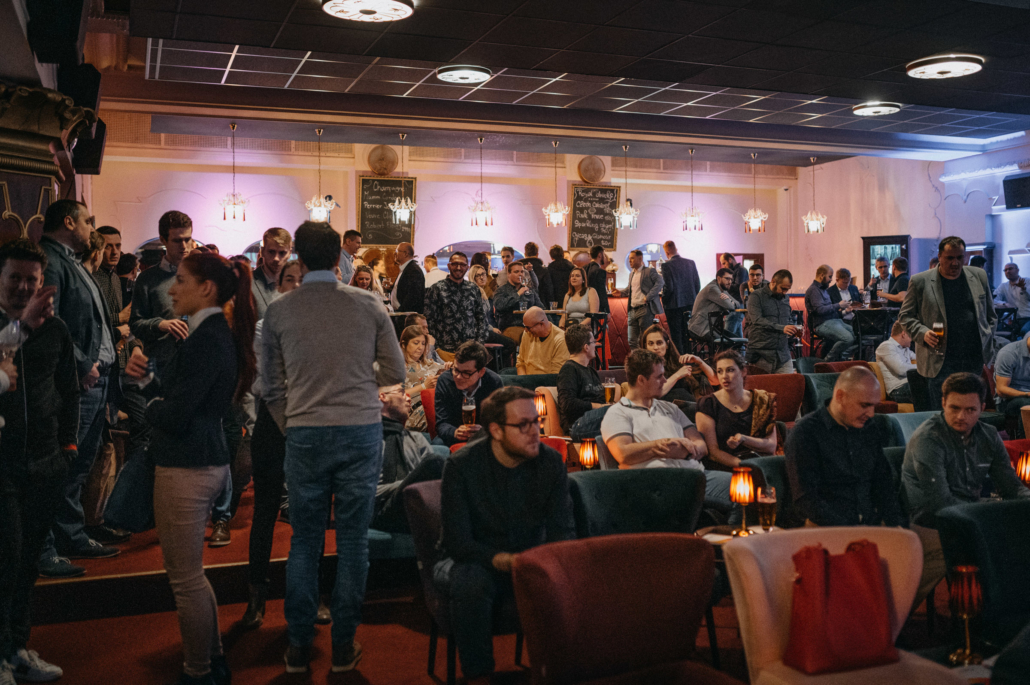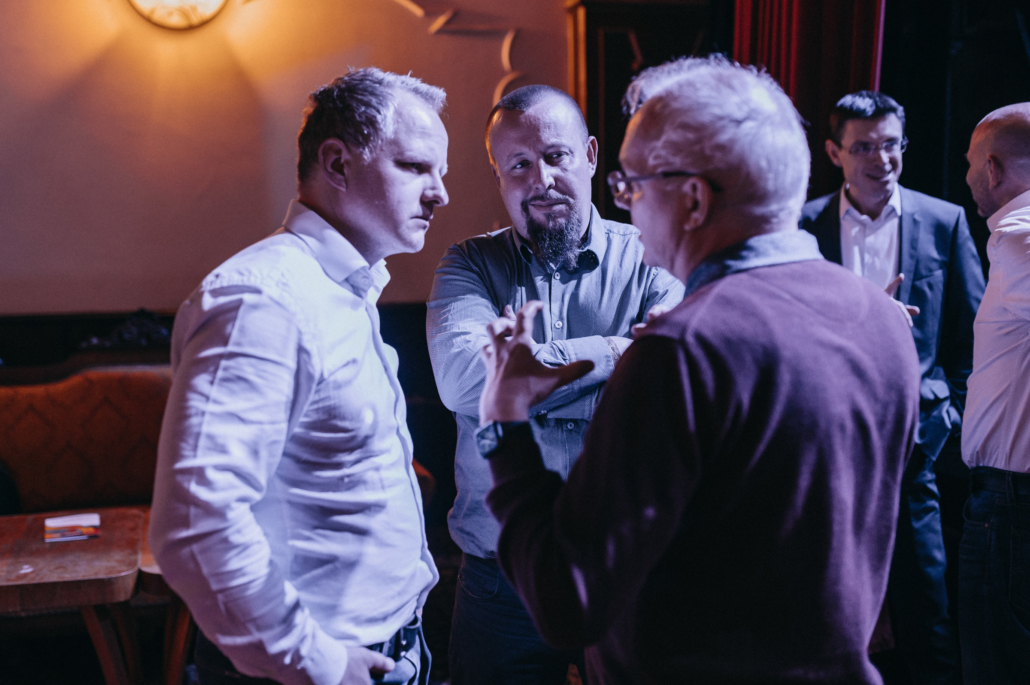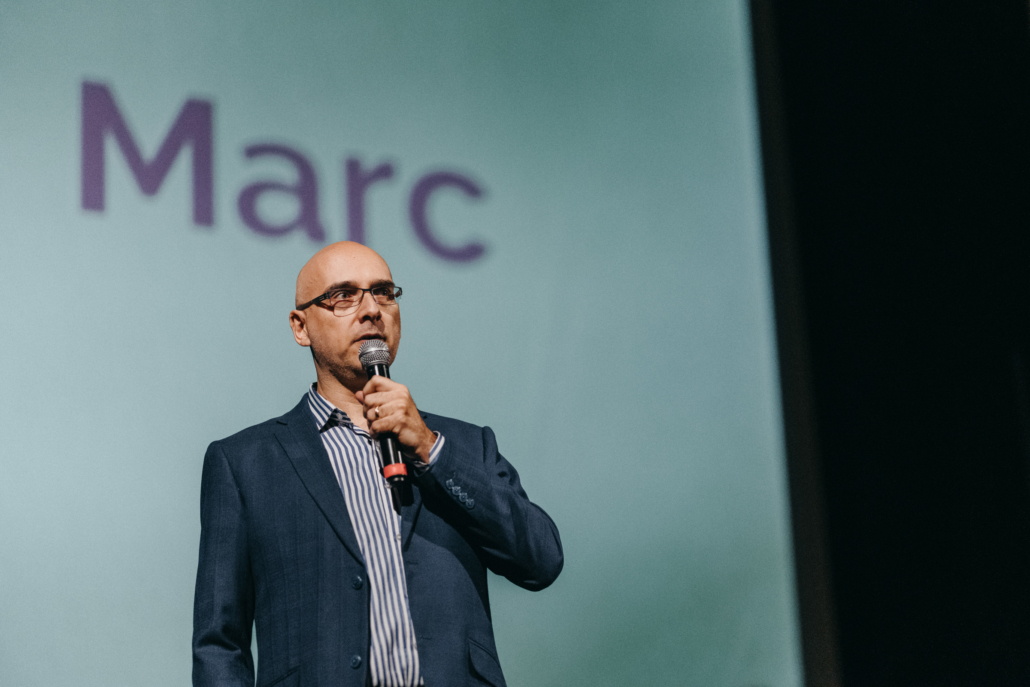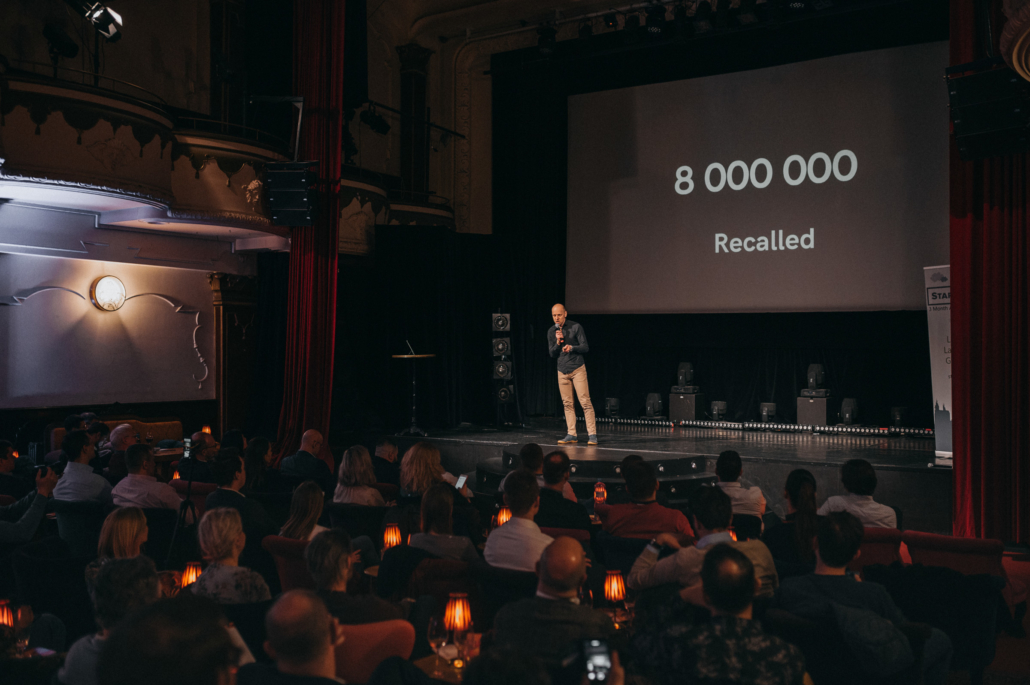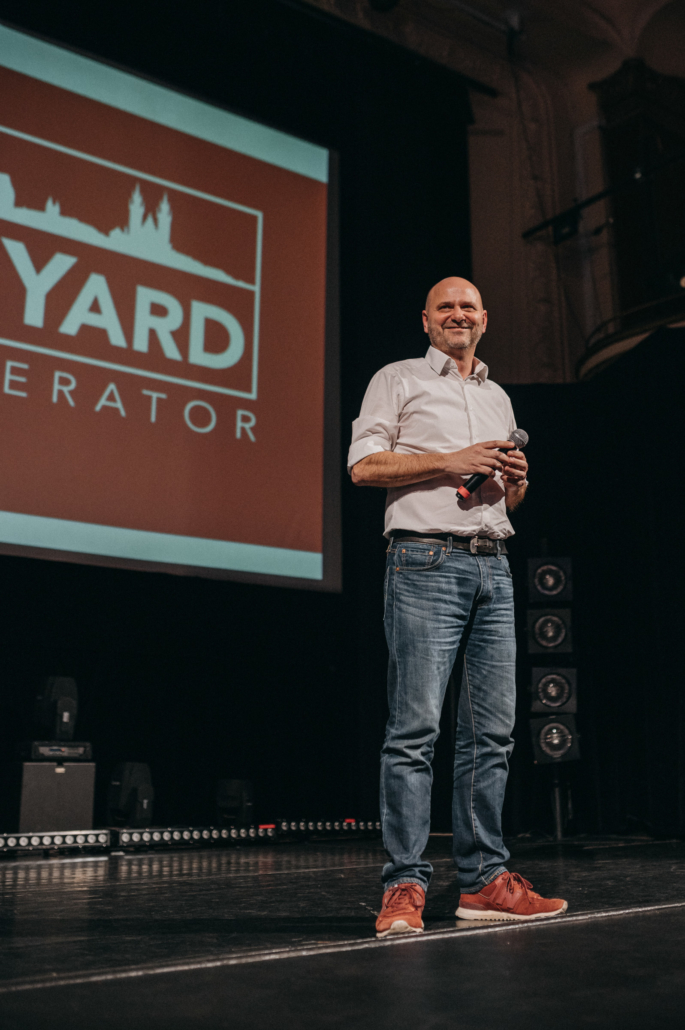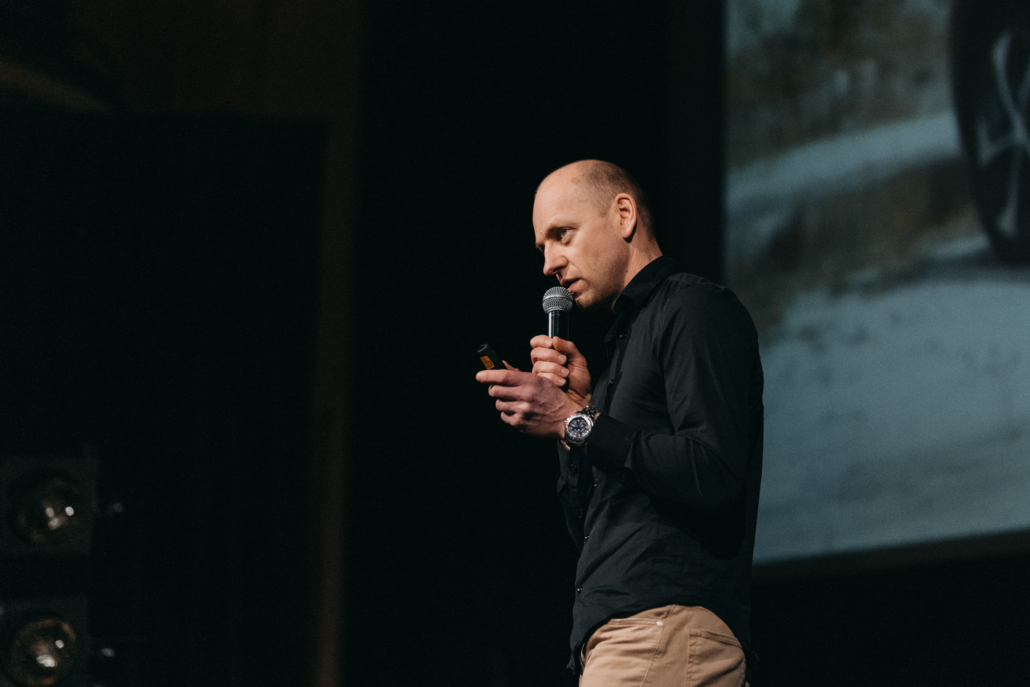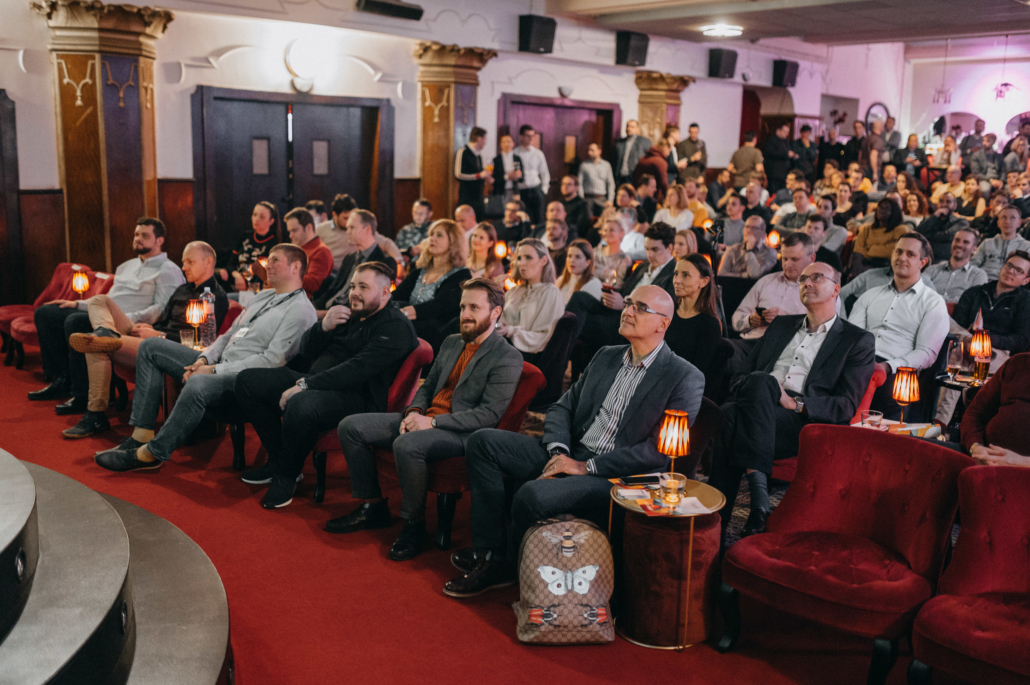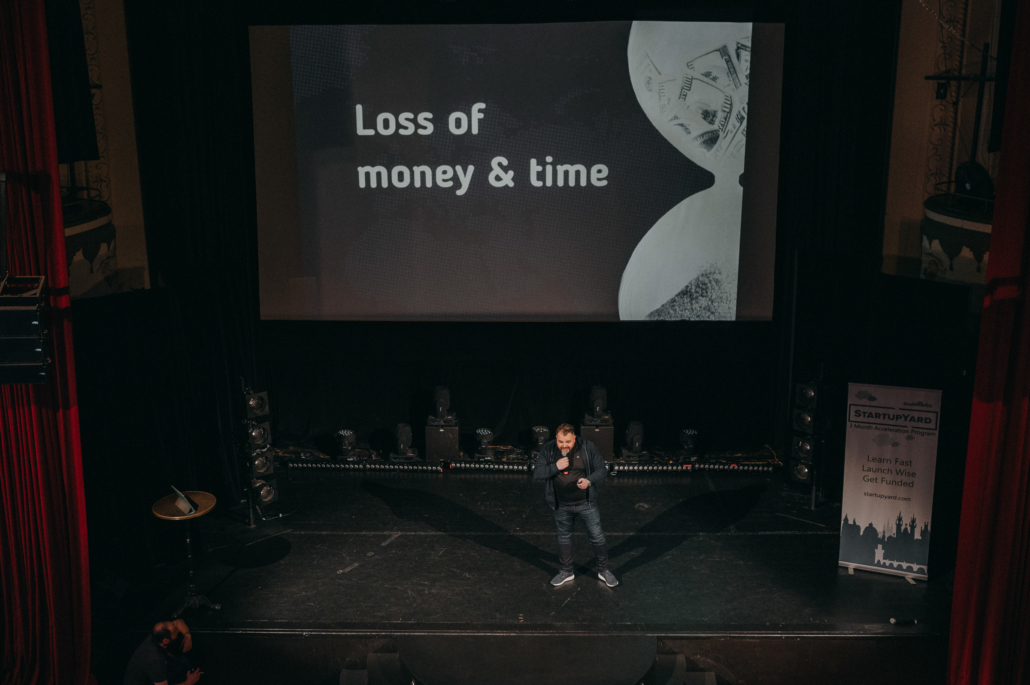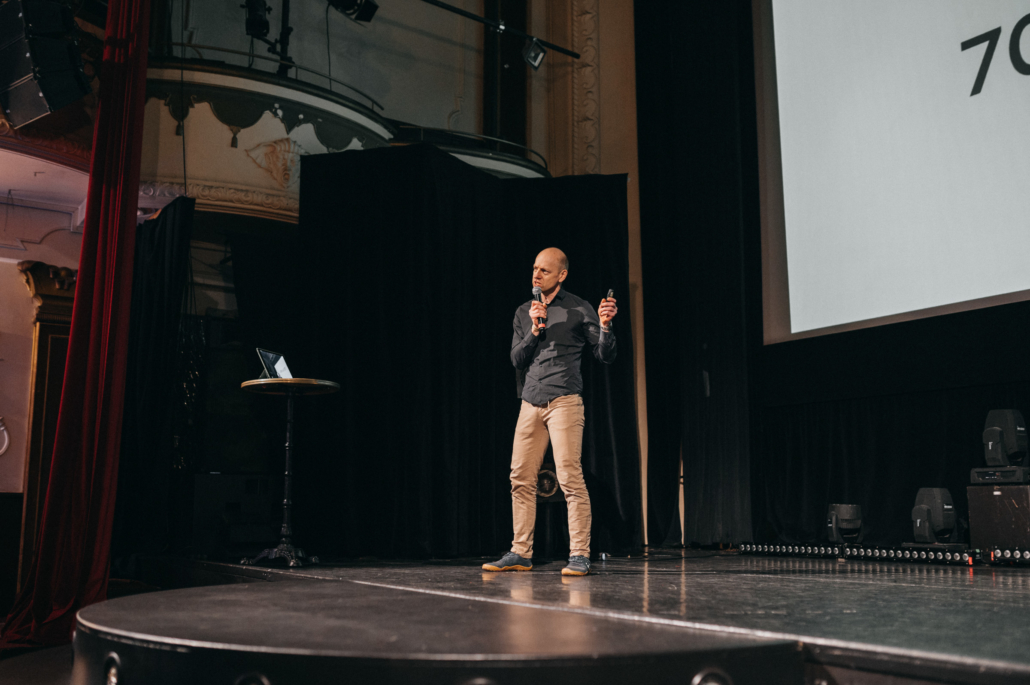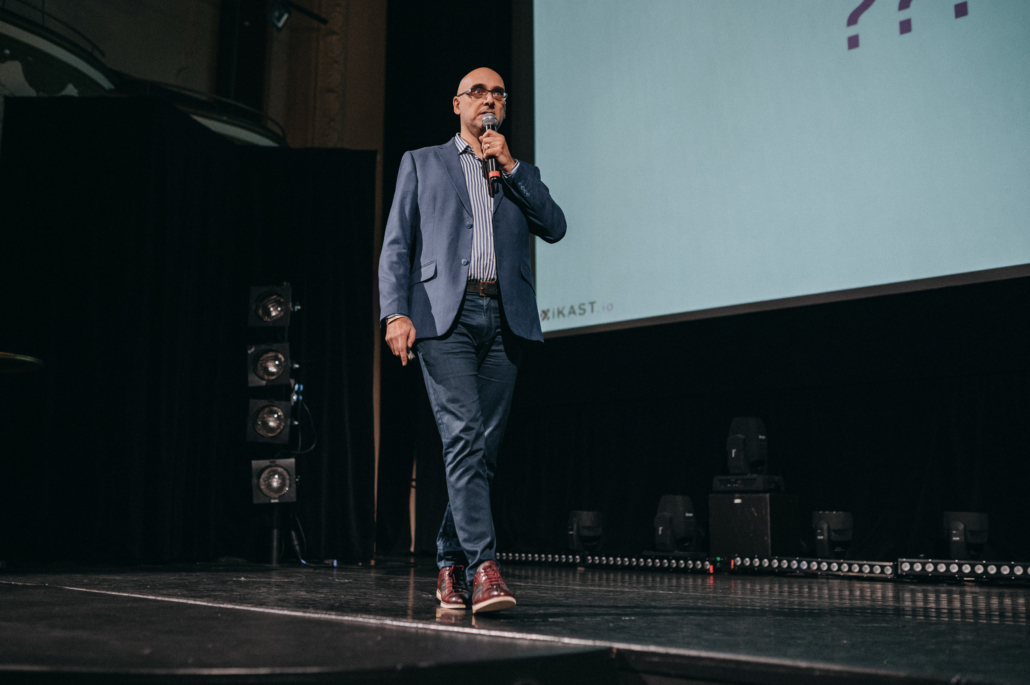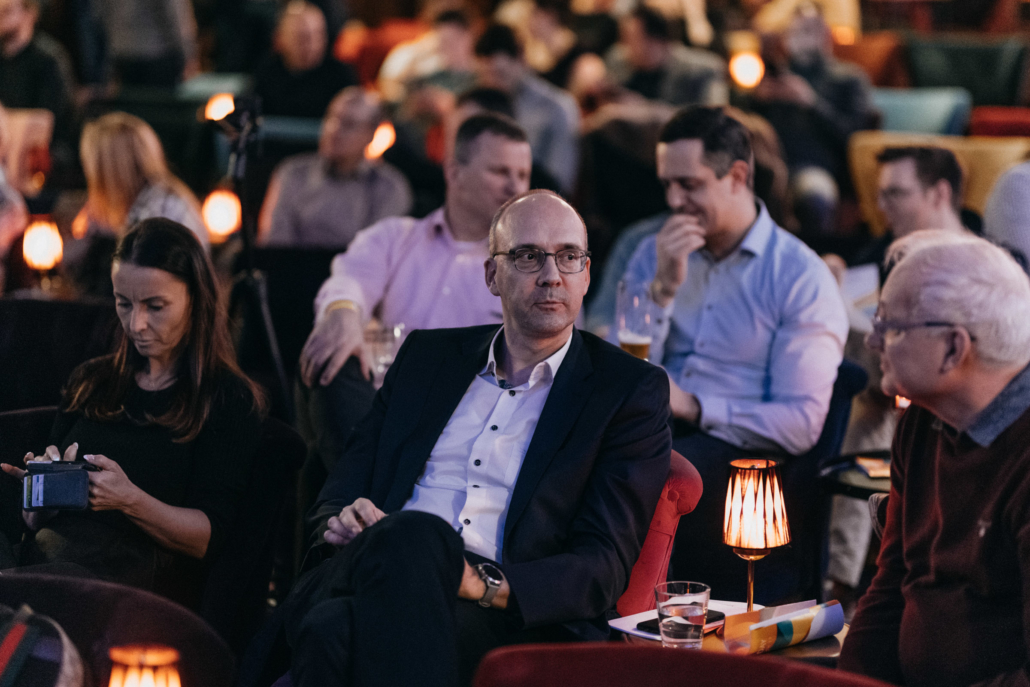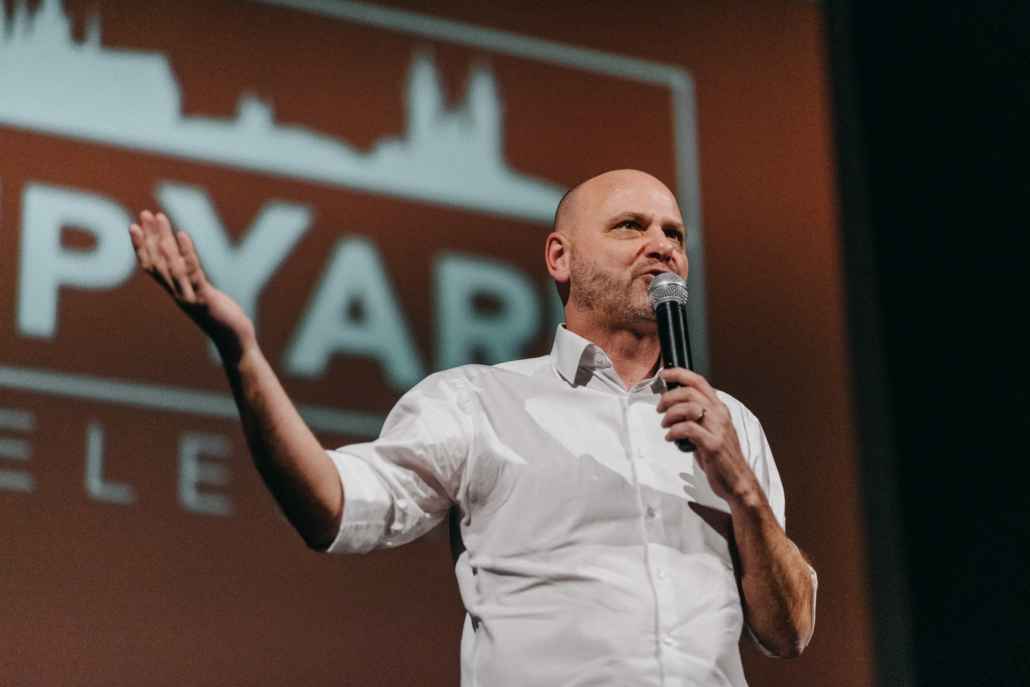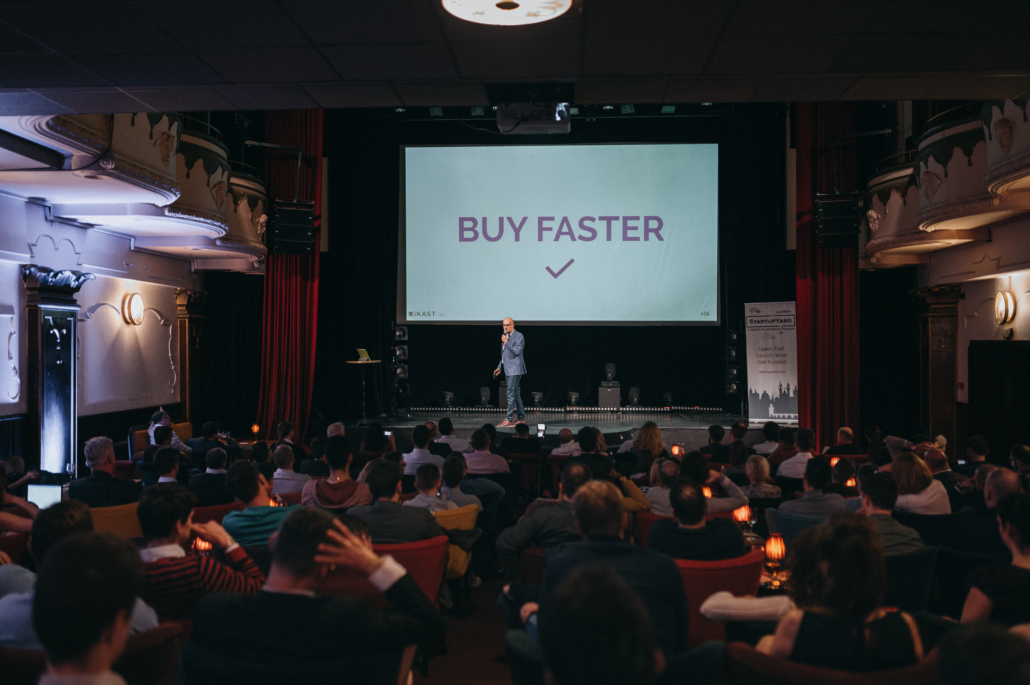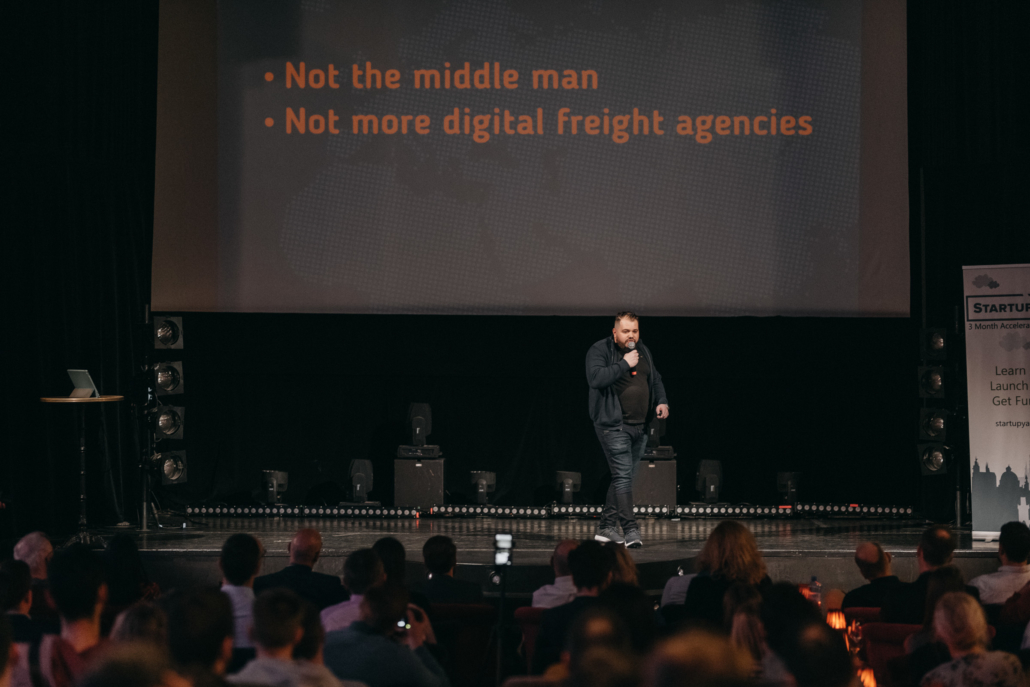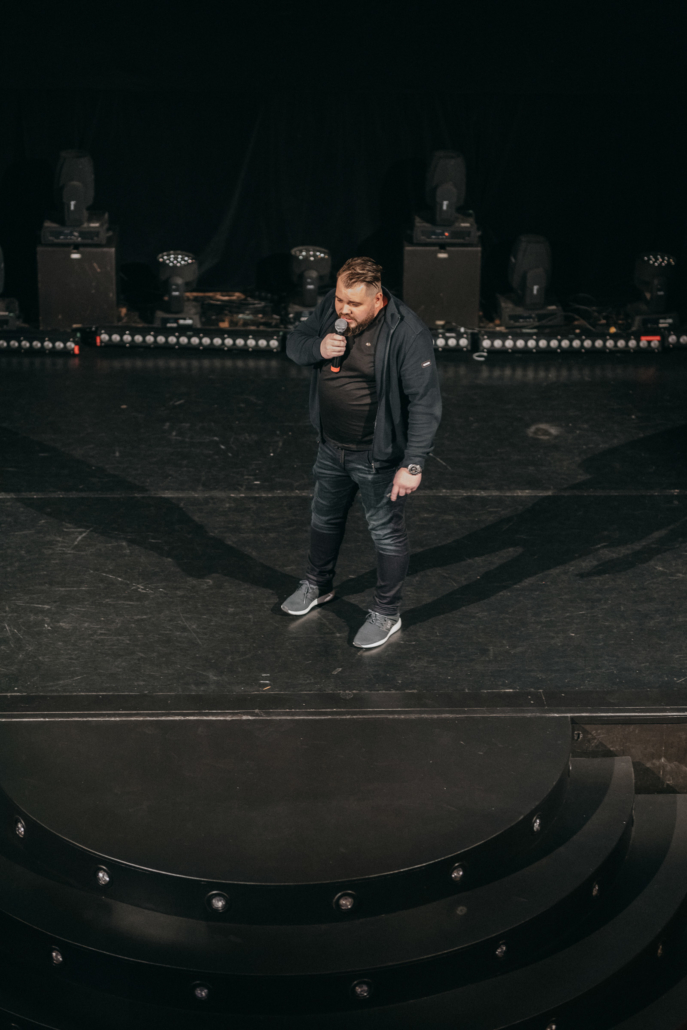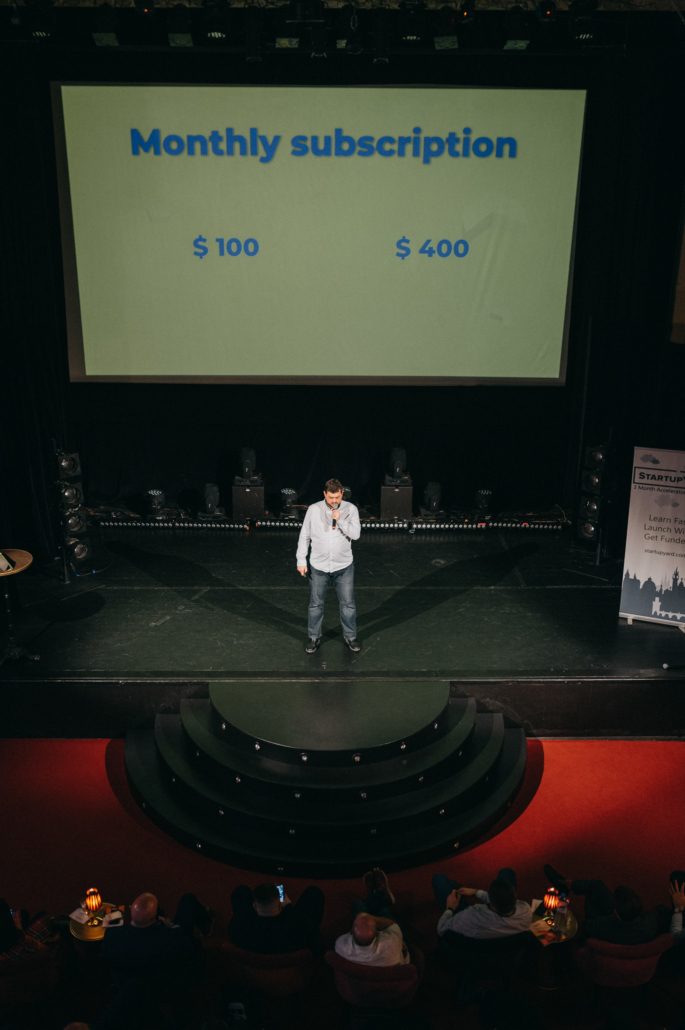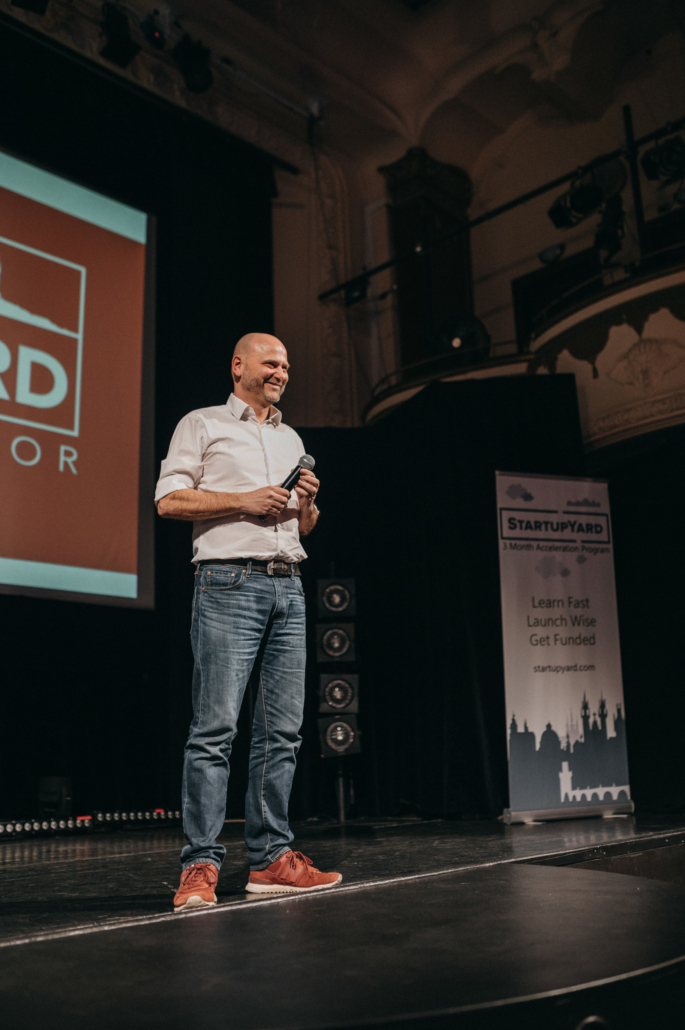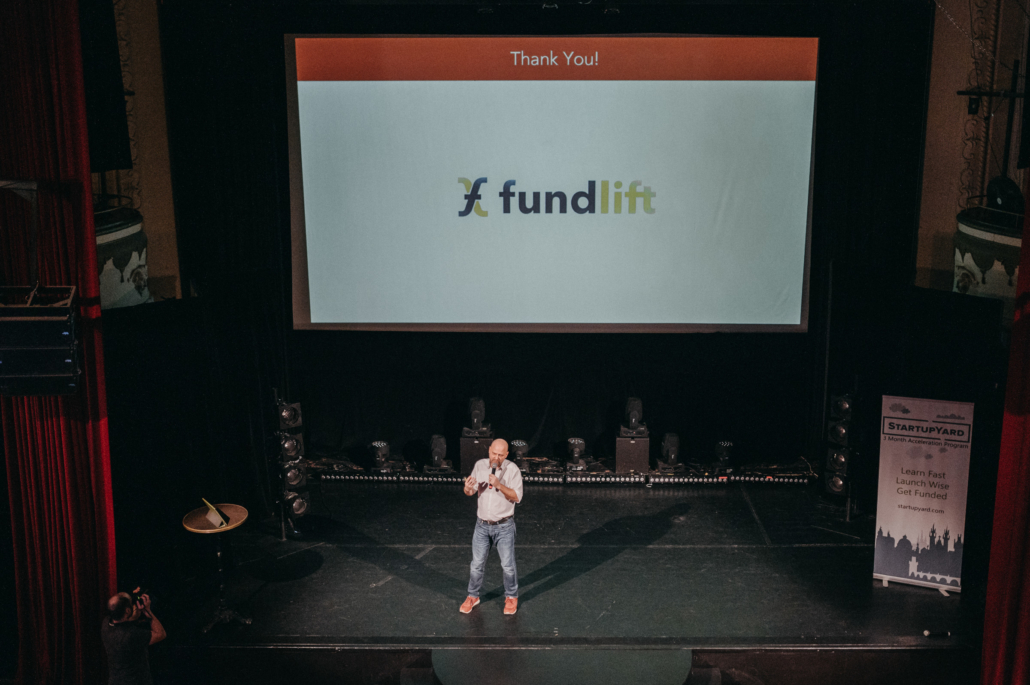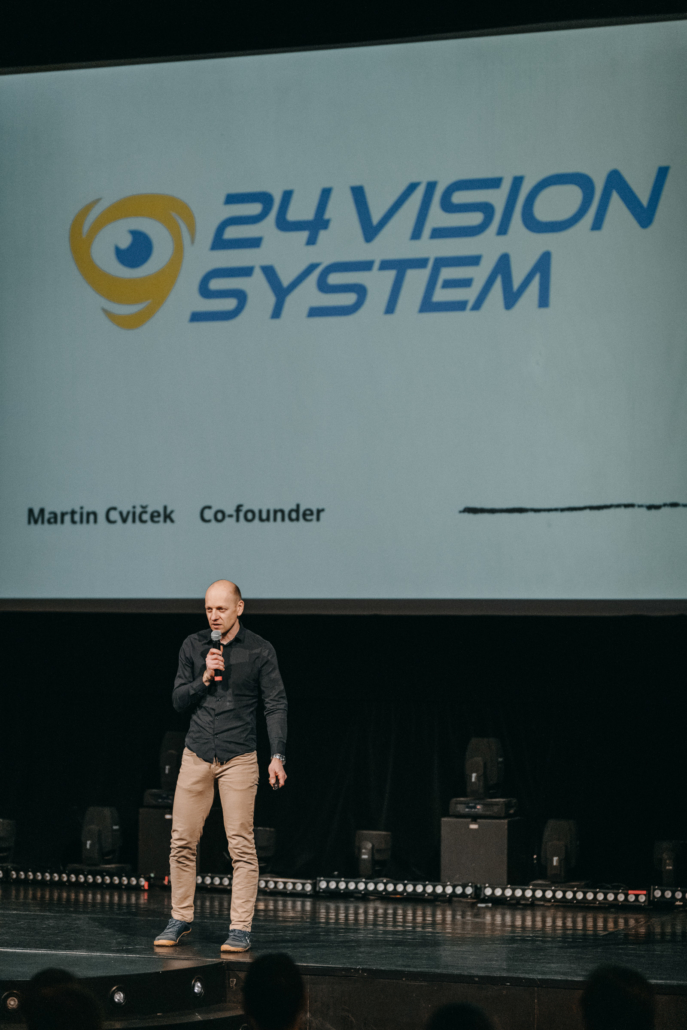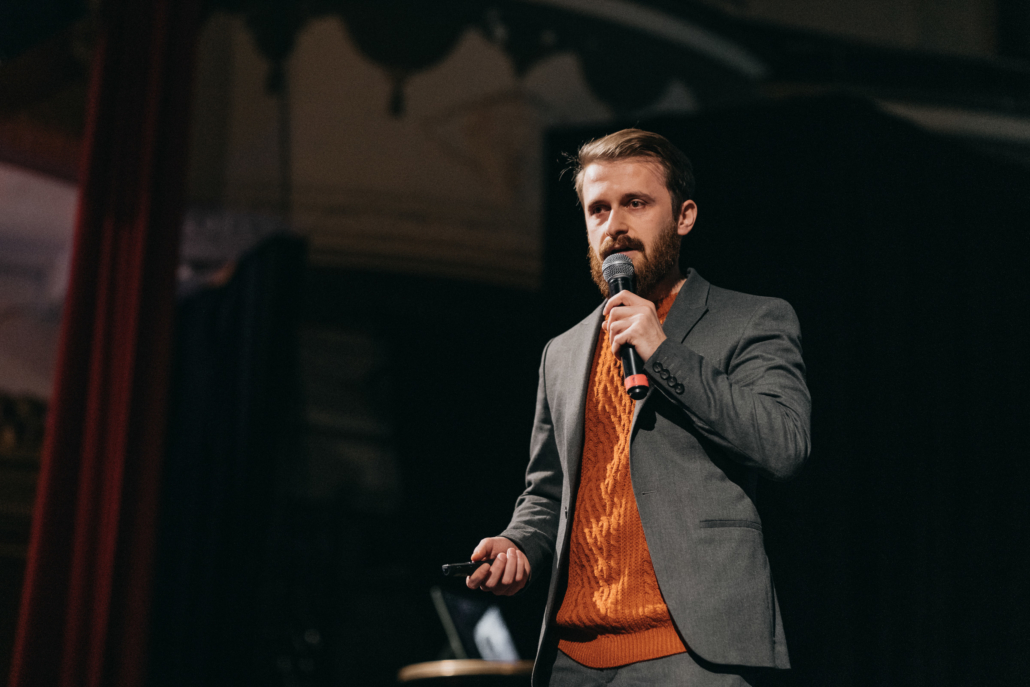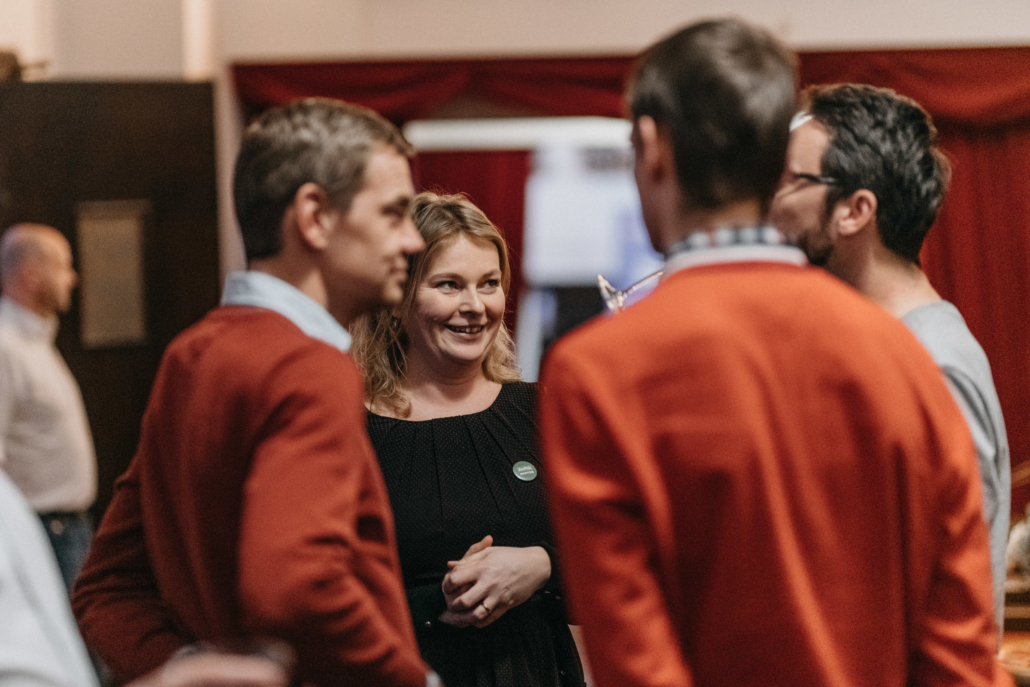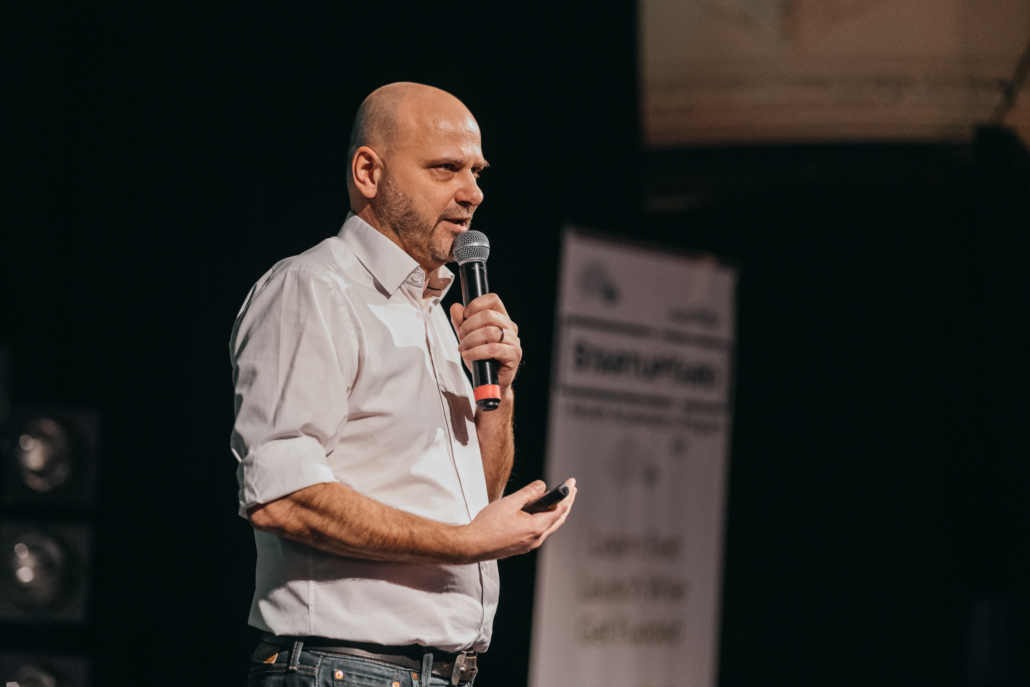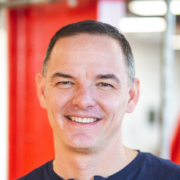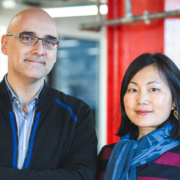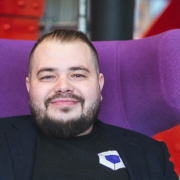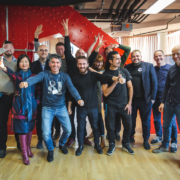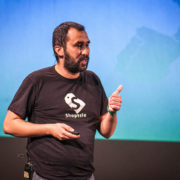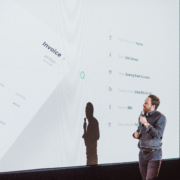Demo Day Batch 11: Full Video and Snapshots
/in Life at an Accelerator, Startups, StartupYard News/by StartupYardWednesday night, February 19th, 2020, the Batch 11 startups pitched to a crowd of over 200 investors, StartupYard mentors and community members, corporate executives, and journalists, among others.
You can see the whole Demo Day, including opening remarks from StartupYard CEO Cedric Maloux in the video that was streamed lived on Facebook.
Watch Demo Day Batch 11: As it Happened
Pictures from the Event:
Scroll to the right to see all the photos.
Meet 24 Vision System: the AI for Error-Free Production Lines
/in Interviews, Startups, StartupYard News/by StartupYardOur second Czech team in Batch 11 is 24 Vision System, a company specialised in using computer vision to observe items on a production line and detect defects as well as configuration errors. If you are a quality manager in a factory, you have one and only one obsession: to make sure that not a single product with error leaves your production line. There could be multiple causes of errors such as plain and simple defects but also configuration mismatch. What is unique about 24 Vision System is their ability to check multiple problem areas in one model and guarantee 99.9% accuracy.
We sat down with Martin Hrisko, co-founder and CEO of 24 Vision System to learn more about how their deep learning models are already being used by popular brands.
Hi Martin! What prompted you to start developing 24 Vision System? What did you see as fundamentally wrong with the way quality managers work today?
We started to develop 24 Vision System as a comprehensive quality monitoring tool for our pilot customer Hyundai Transys. It was used to resolve quality control issues in seat production. Previously, Hyundai used a standard vision system and manual control by quality control staff. However, this classic system had a big problem finding an error in an image with a different visual appearance. This is due to the Just in Sequence and Just in Time production types, where the line alternates products according to customer orders and products have different parameters every time.
We saw the problem as a challenge, and developed and deployed a system core based on deep learning artificial intelligence for test operation in 12 months. We then extended our system by configuration correctness control, where we had to distinguish whether we were looking for an error or a model of the right part of the product.
In practice, the most common quality control is now carried out by an operator who has to check many parameters based on checklists. The operator records these results electronically or manually and then marks the product as OK or NG (No Good). This work is time consuming and tedious. With today’s production dynamics, it’s impossible for an operator to know all product variants – his work performance generally reaches a maximum 70% to 80% success rate. Our system knows all product configurations and also knows where to look for errors. By deploying 24 Vision System, the quality operator gets an immediate real-time result, showing both defects and confusions in the configuration and can only concentrate on eliminating them. The entire process takes seconds, with no errors or mistakes, and with a 99.9% success rate.
How big is the team and why are they a good match for this project?
A team of ten great and enthusiastic people work on the project. The company was founded by three founders whose roles have been distributed well, and therefore complement each other. As a CEO, I’m in charge of business strategy, marketing, finance, management and team motivation. My experience is based on the management of a successful IT company TINT and the 24 Vision System product follows in the original development of this company. Martin Cviček, CTO, leads the research and development and is responsible for the product’s technical development. Martin has many years’ experience in software development. He has spent his entire life in the IT environment, led many large projects, and worked on software automation. Zdeněk Neustupa is a system architect who specialises in programming and new technologies in the artificial intelligence and neural networks fields. We all have one thing in common – we’re innovators who like to bring visions into reality.
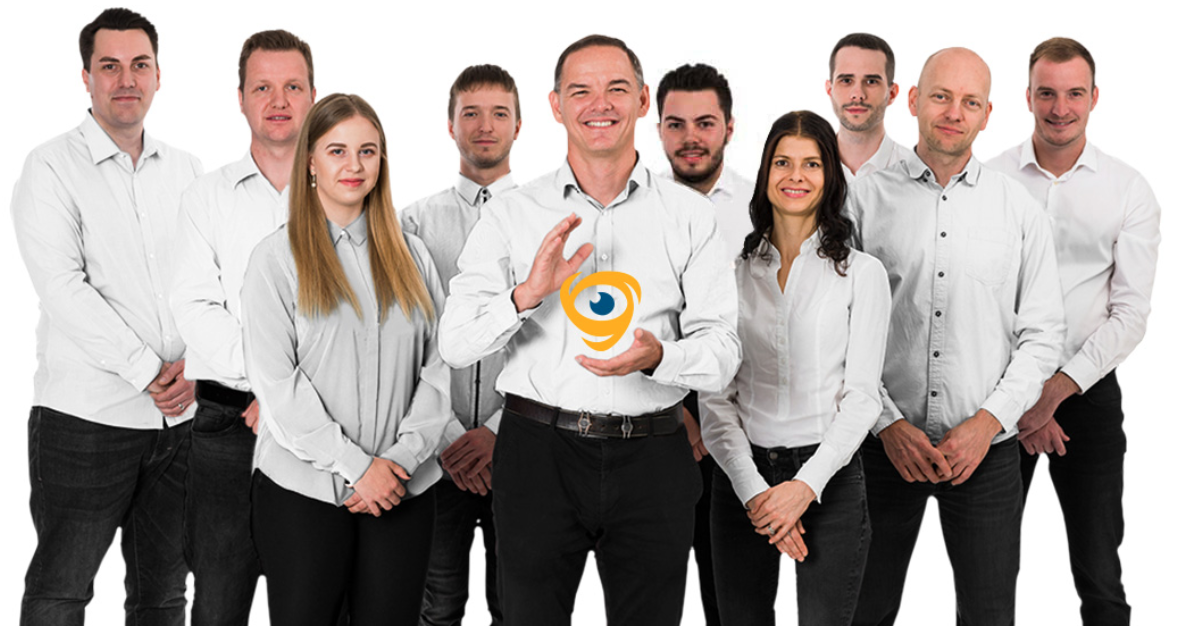
The 24 Vision System team
What are you trying to accomplish with 24 Vision System that you think no other platform has been able or willing to do?
So far, everyone has focused on solving partial problems and individual defects. This is due to the technology, hardware and the production environment’s complexity. We look at the product from the last operator’s perspective, who has a complete product in front of him and doesn’t know the possible defects or individual components. By ensuring real-time communication with the production system, we find all properties for each product and use our system to compare them with defined patterns in the obtained image. There can be a large number of these patterns and combinations, and the recognition result is delivered to the operator in real time.
Can you tell us a bit more about how your technology really works? How unique is your solution?
We receive visual data from cameras located on the production line. We have all the information concerning the product and its properties for every obtained image. Firstly, it’s necessary to teach our neural network what a defect or the right part of a product looks like. Learning is done by presenting images, where individual areas with patterns are simply marked and then the whole network is trained. When we have a basic model ready, the network will be tutored in the form of operator feedback in real operation in several iterations. The neural network is constantly improving itself until it reaches the required recognition accuracy – typically 99.9% (human control accuracy is around 70%).
New features and patterns are defined by the customer in the 24 Vision System portal and he can gradually add more and more requirements when changing production. If the pattern or defect is the same for different product variants, the network doesn’t need to be re-taught. All you have to do is assign the desired pattern to the product’s properties and that’s it.
Recognition results are displayed in real-time on output displays, which can also be customised by the customer. The quality manager has an analytical and reporting module where he sees breakdowns of individual defects or confusion in configurations for each product at any time. For example, this data is available to perform LEAN analysis.
It sounds like any industry could use a solution like yours. How much of a problem is that for a small start-up? Are you able to focus on one segment or are you serving anyone who comes through your door?
Our solution is universal and can be used in general in any mass production industry. However, we now focus mainly on Just in Sequence or Just in Time production. The automotive sector is a typical representative of this production, where different cars are produced on different lines in different user modifications. We were close to this, as the Hyundai car factory is located close to our headquarters, where we developed and tested our system and gained extensive experience. In the automotive industry, it’s only very difficult to deal with final quality control when the vehicle is completely assembled. Any mistakes at this stage are very costly and sometimes irreversible. Moreover, stopping the production line is very expensive. All automotive suppliers are bound by strict contracts with high penalties for failing to meet a delivery deadline or failing to meet quality standards. This is why we chose the automotive sector as there are high quality requirements and our 24 Vision System system ensures that no defective products come off the production line.
We plan to address other industrial sectors (consumer electronics, food, healthcare) in the coming years. We can’t solve everything at once. Each implementation must be preceded by a feasibility study and rapid prototyping to assess whether our system is suitable for the customer and whether it will be implemented. Experienced consultants, traders and developers are needed for such activities. There are ten of us in the team and we mainly develop our knowledge in the automotive field. We want to become the leading suppliers in the field of comprehensive final quality before we reach out to other industrial sectors.
Can you explain what is special about the Czech industrial market? Why do you think your home market is a good market to start?
The Czech market is strongly focused on automotive, which accounts for around 9% of GDP. We have three important representatives in car manufacturing and hundreds of TIER1 and TIER2 suppliers are connected to them. The Czech Republic has a long history in vehicle’S production and developed cooperation in the research and development field. The feedback that we get directly from production is extremely important to us as a start-up. This allows us to dynamically develop the product and respond to market demands. Slovakia has a similar situation, where automotive is also the largest industry.

So if you are a quality manager in the automotive industry, what do you need to get started with 24 Vision System?
This is the easy part – contact us or one of our partners. Everything is available at www.24vs.io. Together we will analyse any problems that occur on the production line. If rapid prototyping is successful, we will design the entire solution and prepare an offer within six weeks. We offer three variants of our product, depending on the features used – Basic, Advanced and Enterprise. The price includes the license fee, system administration and updates. The price for hardware and implementation depends on the complexity of the install and includes cameras, networking and a server for running the whole system. At the same time, we will train the system operator, who will quickly understand how to work with the system. As a result, the quality manager gets a tool to improve quality, record rejects and detect defective products.
The production manager will have the data to optimize production and carry out LEAN analysis so he will be able to accelerate production and find any weaknesses in the production process. A benefit for everyone is the elimination of tedious jobs, reduced costs and a sense of security resulting from avoiding non-compliance with the supply contract.
Talk a bit about your experience with StartupYard. What were the surprises, challenges, highs and lows?
We have had a very positive experience with StartupYard. It was the right decision from us to approach this company and sign up for the accelerator. Right from the start we were fully involved in all activities and we were surprised by the quality and knowledge of the mentors. The meetings were brisk and intensive; it was difficult, but we acquired a lot of experience in business, presentations and strategy. In addition, we met interesting people who are interested in helping us and sharing their experience. In general, today we are much better prepared to enter the market, we have set a clear business and sales strategy, we are working with real risks and we know what pitfalls await us. All this knowledge will help us become a successful company and establish ourselves on the market.
Meet iKast: the Smart Contract Solution for Digital Content Providers
/in Interviews, Startups, StartupYard News/by StartupYardIf you are a digital content producer or distributor today, there is a lot of chance that you will find it difficult to keep track of your distribution and financial payments. The team behind iKast has more than 20 years of experience in the online media industry and knows that full transparency and accountability is one of the biggest issues affecting the industry. It might all be entertainment and glitter but behind the scenes old paper contracts still rule and money flow is far from being guaranteed.
We sat down with Cedric Monnier and Jessica Xu, the two co-founders of iKast to discuss more about their background and their vision how smart contracts can provide total transparency for all the stakeholders in the digital content production and distribution.
Hi Jessica and Cedric! Tell us a bit about your personal journey towards founding iKast. How did you get here?
We are both serial entrepreneurs and have cofounded, a few years ago, a company editing the solution OKAST for content providers who want to have their own video streaming platform, “à la Netflix”. Surfing on the booming business of online video, we quickly converted a lot of studios and producers and are powering more than a hundred (and counting) video platforms from the USA to China.
During this process we’ve been daily speaking to our customers and saw, months after months, their difficulties in managing their customer base, struggling in finding more new contents that would keep subscribers happy and recurrent. Buying contents was too long, too complicated, sometimes even too risky, making them less competitive in a very fast growing market.
A year and a half ago, some of our biggest customers asked us if we had any plans to address this specific issue. At that time we had witnessed the pain point and were thinking about how to solve it. We were testing some new technology (blockchain) that could be the ‘secret sauce’ of a powerful new solution. We proposed then to five of our customers (chosen by countries, size, languages) to start a private alpha test of a potential new feature.
After 6 months of tests, we got a lot of confidence from them and our technical team: we got something! Working then on the business side of it, we realized that this solution can be widely adopted and be big if we unleash it from OKAST. Then we decided to create a new company ‘iKast.io’ and started to build it and sell the solution.
What do you think makes you a good match for this project?
Jessica and myself have been working in this industry for 20 years, with different roles and company sizes. We’ve been in almost everybody’s shoes, from a technology perspective (Cedric) or business matters (Jessica).
We’ve seen and been part of the big changes the entertainment industry has been through. We personally suffered and benefited from the hard times and new usages brought by the Internet and then the mobile revolution. We are insiders.
Joining our experiences, we speak our customers’ technical and business languages, have the relationships in the entire industry, and know very well how bad is the pain point and how people are trying to manage it. To build iKast we did gathered a team of experts but also involved important leaders of the industry, as advisors, in the intention to represent all company’s interests. We don’t just sell a product, we accompany our customers in their growth.
Cedric, you are our most experienced founder joining our program so far. What made you decide to participate in an acceleration program? Did it match with your expectations, or did it surprise you in some way?
Very often, “most experienced” founder means having made a lot of mistakes (laught)!
Nowadays the business environment is extremely competitive, digital technology is everywhere and seen as commodity, startups have become almost the new normal and an industry by itself.
iKast is our third startup. We still have to prove everything at every moment. We’ve learned, with my co founders, and sometimes the hardest way, that making the difference relies on two principles: “whatever the idea, executions is key” and “always been surrounded by smarter people than you”.
In the past we followed different personal training programs and were accepted in some incubators. We reviewed their basics of entrepreneurship, business, marketing etc. We acknowledge and appreciate the value of it : that was helpful but not enough.
That is why, when we started iKast, we decided to look after an accelerator: finding smarter people focused on helping us in the execution of our plan.
After six weeks of acceleration, we can testify that there is with StartupYard more than an acceleration: a spinning effect. We pitched to more than 100 mentors, testing, adapting, shifting our value proposition. An exhausting process but we nailed down the essence of our marketing messages and grasped our go to market strategy.
Mentors used their network to introduce us to more people, advisors and future customers. I’m just amazed by how much mentors and the accelerator’s team are committed and want to help!
Let’s go back to the online content industry. What did you see as fundamentally wrong with the way content distribution works online right now?
We are in a new era for contents: in less than five years, the internet and mobiles have changed it all, built new giants like Netflix and put at risk all previous players, from TV channels to big studios. Everything is globalized, no borders or frontiers, data and analytics rule businesses. Multiple generations of people (hello millennials!) watch or listen to music, videos, differently.
This technology tsunami has not been envisioned by most of the key players of the pre-internet world. It is a big shock. Video represents almost 80% of internet traffic and it is growing!
To survive or grow, TV channels, mobiles applications, video platforms are fighting every morning to keep their users/subscribers. For that they need to put online, almost every day, new contents. This is not a war of end users but a war of contents between distributors. It creates a massive demand on the content market. Looks like a fantastic opportunity for content providers….
BUT the problem is that this digital era relies on non digital processes: finding new content, licensing (buying) them, managing consumptions are mainly tasks done by hand, based on personal relationships between buyers and sellers…
Fundamentally, the mistake is that the content industry failed to digitize itself: long processes make them expensive, then create more and more missed opportunities to buy, increasing loss of subscribers. Making contents costs heavy money and needs months to deliver. Buying faster implies automating the process, getting more business rules to manage and preventing mistakes when managing revenues to pay. If a platform can’t give data and need months to pay back, then content providers have plenty of other buyers possibilities. Then, isolated, the platform loses its differentiator: different contents and closes down.
Currently, this massive opportunity of a demand-driven market is totally hitting the wall since it is not able to handle fast growth and guarantee proper money management.
A trust and scalability issue.
We believe that we can dramatically change it by providing a transparent, fast, automated content marketplace that can re-establish trust and scale everybody’s business.

How can content producers start using iKast to distribute their content? What benefits will they get instantly?
It’s very simple! First of all you go to our website and create an account. Then you start to enter your catalog with for each content your business rules: how much money you want, which countries you want to sell in, which type of platforms you are interested in, etc.
Then we control and certify your data and make them visible to platforms to buy. When a platform is interested it directly licenses (buys) your content, in a few clicks. We guarantee the transaction and deliver the content.
We made this long and expensive process very quick and safe since we monitor all the contracts part. Once the content is available on the platform we check your business rules, to avoid or detect any issues (infringement) and collect for you consumption data (that you never had before) in order to calculate how much money the platform owns you (royalties) and even automate payments.
In short, we bring more customers to content providers by fast licensing, guarantee royalties since we track them, speed up payments (from one year to one week!) by automation and all along establish a trusty environment.
What have been your team’s biggest personal or professional challenges in making this project a reality?
We have spent a full year preparing the creation of iKast. Studying hundreds of licensing contracts, meeting and talking to all kinds of content producers, platforms owners, lawyers, TV channels managers, and testing technology.
Challenges were to embrace the problem and simplify it. Not only crunching numbers, coding servers but essentially to understand and find the way to digitize all business processes in licensing and distribution. This was an extremely passionate work!
Then came the building time and another challenge: explaining to everybody why what we do is interesting to them, why it works, etc… A sales challenge, close to evangelization, that we now do every day!
Who would be the ideal customer of iKast? Is it a TV producer, a music band, an online TV platform, a content streaming platform, all of the above?
Since we build a marketplace, we have two categories of customers: the content provider, selling content, and the distributor, buying contents that will be monetized to end users by putting them on a video (or music) platform.
On the content side, we address many different types of customers from artists, personalities, to independent production houses, movie studios, TV channels, brands, but also public organizations like foundations, museums, countries, etc. everybody making a living by producing content. Demand is so high, and production costs lower and lower, that we see more and more new companies and people starting production or optimizing their back catalogs.
On the distribution side, we obviously target first of all video streaming platforms (and there are almost new ones every day), from the well established ones to the very new ones. But we also look after TV channels that have launched their digital video platforms, regular video on demand services, and also digital publishers that are enriching their text-based contents with more and more videos.
Your solution uses the Ethereum blockchain. Many people aren’t deeply familiar with how that works, and what the advantages of distributed ledgers are. Why is Ethereum so important for your solution?
Explaining the blockchain technology will need way more lines that we have in this article but let’s try to simplify it by describing its two core functionality: it acts as a database registering data that nobody can change and as a computer running code that nobody can stop or change.
A blockchain is a software running at the same time on a multitude of connected computers. It is physically distributed across real computers running in the world but giving you the impression it is as simple as a software running on your personal computer.
Every time you run a program or register data on this ‘big computer’, it is ran and stored on all others. So when data is stored it is replicated on all computers. So if somebody would like to change the data it needs to do it everywhere. If this is for a bad reason, it can’t happen since other computers will refuse the action. It makes the system totally reliable and transparent as a ledger.
Since a blockchain is like a big computer, it can also run some small codes. Here again, it will be distributed across all connected computers and then executed by each one. The software will then guarantee the right execution of this code since nobody can modify it (hack) or stop it. If one computer gives a different result it will be rejected by all others. Nobody can’t stop the execution of the code since it means he has to halt all computers in the world, at the same time! This is the perfect execution machine.
These two unique features make this virtual computer transparent and highly trustable. A lot of blockchains exist and are fully operated in the world. One of the most known is bitcoin!
Ethereum is the first blockchain introducing smart contracts in addition to the ledger feature, popularized by bitcoin. It has today more than 10 000 computers in the world running its code. These computers are owned by a large diversity of people, from companies to individuals, that is why it is considered a public blockchain. Some consortium or group of companies run their own blockchains (meaning on their own computers), offering private services.
Ethereum is a key part of our solution. From a technology perspective, it is the most advanced solution to run smart contracts with a huge developer community and a large and proven network.
From a business perspective, as the largest public blockchain, it is a game changer: it is really reliable and nobody in our value chain (content provider, distributor, ikast) owns it! In opposition to consortium blockchains, owned by few companies, we are sure that iKast relies on a system that can be used by our own competitors, distributors’ competitors, content providers’ competitors without any risk of collusion.
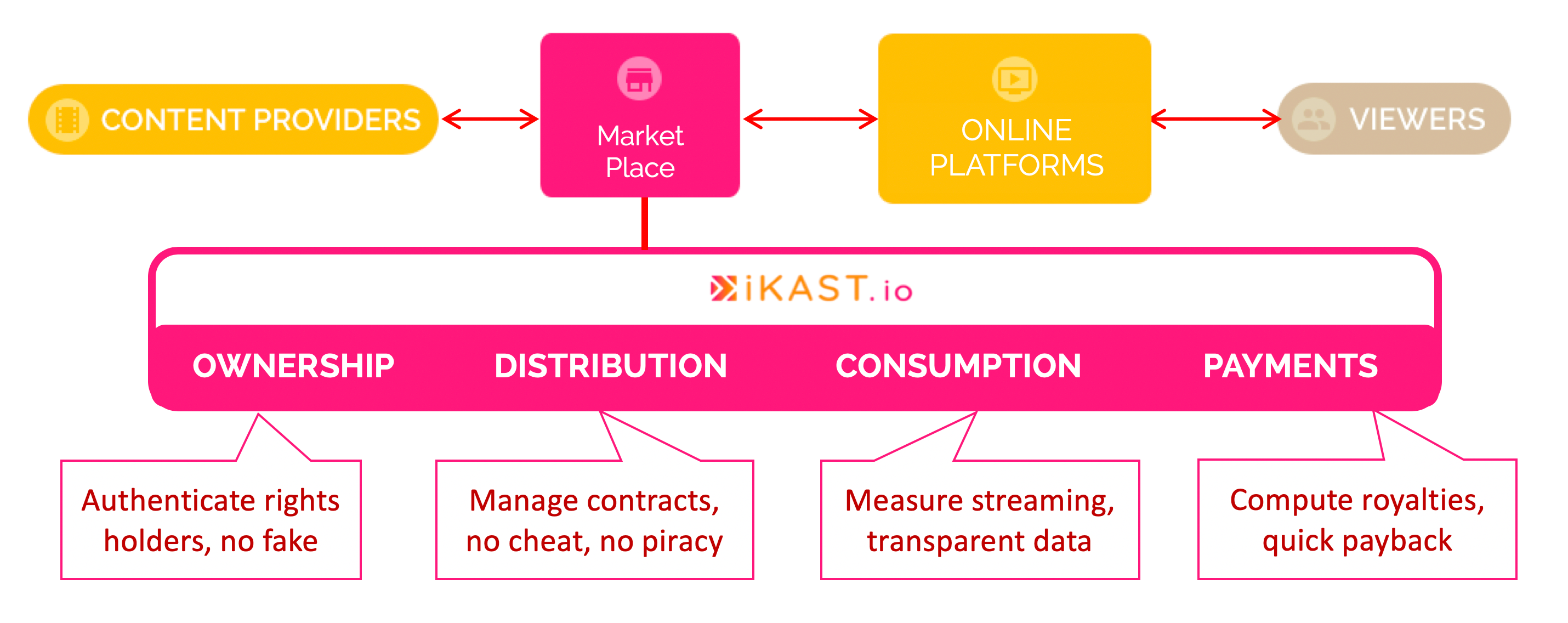
Can you tell us a bit more about how your technology really works? Why can’t you achieve the same result with a good old database?
Our solution iKast is based on two core ideas: content licensing is slow and expensive because it needs a lot of contract work to be done, without data it is hard to guarantee proper and trustfull royalties payments.
So basically, what if we can transform paperwork to data work? What if I can change paper based contracts to digital contract, smart contracts? And what if we can collect data and guarantee that nobody can change or fake it? What if we can do that with software and then make it fast?
We adopted the blockchain technology since it is the only software that offers what we needed: a solution to safely register data and control and execute business rules automatically. That goes way farther than what a simple database can do!
Let’s deep dive by using a use case: a content provider has a movie he wants to sell.
When he goes to our platform, he will fill in information about it, attach a video file and describe his business rules. He will then list how to use his content (available in which country, which language, for which device, etc.) and business conditions (how much money to buy or rent it, how long it will be available, etc.).
When a distributor agrees on buying, it creates a licensing contract binding provider and distributor. All agreed rules used to be in a paper contract. We shift them to a small software running on a blockchain (smart contracts). We notarize the deal and make it legally speaking binding.To be able to buy, the distributor agrees on installing on his servers a small piece of code we provide.
When an end user of the distributor’s platform wants to watch the movie, our small software agent will query the smart contract on the blockchain and checks if the contracted rules are fulfilled: is the end user in an allowed country, is the movie still available, etc. if no, we deny the playback and create an infringement case. If everything is fine, we register in the blockchain the viewing information (duration) and calculate (based on licensing rules) how much money (royalties) must be paid.
Thanks to this system, we can 1/ create in few clicks a new licensing deal, since it is totally streamlined as a list of rules to accept, 2/ check in real time that all conditions of a deal are under control or detect wrong usage 3/ collect and certify the key business data: consumption 4/ calculate royalties and provide a totally transparent bookkeeping for both parties.
You are both based in Paris, France and have now spent one month with us in Prague. Do you see any differences or similarities in the way Czech and French people do business?
We really like the city, charming and sophisticated but at human size! We have the feeling that it is way less stressful than Paris.
Regarding business, let’s state it like this: in Paris, people always start to ask: “How does it work?”, very cartesian thinking. Here, in Prague, the first question is “what are the benefits?”. It is a very different thinking focusing first on the business. Next question is thus “Why it works?”, trying to nail down our execution skills.
In addition to this big difference, we also see that decisions are faster taken, go or no go, and it is way easier to meet new people.
Meet Symbolt: the Intelligent Design and Revision Platform
/in Interviews, Startups, StartupYard News/by StartupYardIf you are a marketing manager working with an agency, there is a high possibility that you spend more time waiting for revisions of designed documents to be done than actually implementing them to the market. Usually these back and forth iterations take forever, and delay your product’s time to market so Symbolt.io is an intelligent design and revision space which empowers clients and designers to cut design revisions in half.
We sat down with Leart Zogjani, the co-founder and CEO of Symbolt. This platform is the result of hours of frustrations experienced by Leart and his colleagues. Initially a graphic designer, Leart runs a successful design agency but always struggles with revisions, especially on long documents where one change can break the whole layout. The goal of Symbolt is to bring a radically better process to design long documents. After realising that there were a lot of tools for collaborative design but nothing for collaborative revisions Leart decided to launch Symbolt.
Hi Leart! What is it with Kosovo? You are the 3rd founders (after Gjirafa and Blocknify) from Kosovo joining our program. Is it something in the water?
Exactly. There have been several water-related investments from Czech Republic in Kosovo. I guess they put something in the pipes to call on entrepreneurs. Also, we wanted to run to countries with enough of it, but just far enough from the sea to be safe.
On a serious note though, StartupYard has built a really good reputation in Kosovo through Gjirafa, and also other companies that the SY team has interacted with. And Mergim (Gjirafa’s CEO), is someone that I’ve looked up to, and consulted quite often. He then suggested that I should definitely consider the opportunity to apply from day one. I guess he knew a thing or two about how life-transformative this experience actually is!
What prompted you to start developing Symbolt? What did you see as fundamentally wrong with the way graphic designers work online right now?
When in 2014 I started my design studio, as a young graphic designer, I aspired to build a company that would bring together design, contemporary art, and philosophy. We were up against a giant of “how things must be done”, and how the market works. So as a team of only a trio until 2017 we managed to exhibit and talk at Ars Electronica Festival, International Motion Graphics Festival, Doku:tech get published in several books, including a book on contemporary synthesis of the philosophical, theoretical and practical methodologies of illustration and its future development. It was all fine and dandy, with the exception that our business was barely in survival mode.
Whenever I jumped into making any work that would pay well, it would mean that there is maybe 20% creative work, and 80% technical, repetitive work with A LOT of back and forth with the clients.
In particular, when we were working for a few clients in the financial sector (which certainly paid best), the documents that we needed to design, however easy to complete from a visual standpoint, and under strict branding rules, took forever to finish, as most changes needed to be done on the copy, and after the final design had been approved.
So what we had to do was literally go through dozens and dozens of iterations through emails, and phone calls, as well as probably hundreds of annotated PDFs that left no space for us to enjoy our work.
Now that, I call appalling. Yes, there are many ways to lock clients in contracts, or maybe get paid for changes. But, who can say that they are happy to do a gazillion technical changes, when they have a bachelor degree in graphic design? This gets even worse for the freelancing community that keeps expanding.
On the other hand though, this seemed to be no less frustrating for the marketing team on the other side of the coin – the clients. I mean, if they can afford to pay for our time, that means their time is already more valuable. And they end up spending so many hours of their lives trying to clear out to us what exactly to change and where, and then wait an extra couple of days for us to get it done and delivered. Guess what their pressure to deliver on time to market was doing to them!
To me, that’s quite a few red flags to sound the alarms of something needing to be done about it.
You are calling Symbolt an intelligent platform. How intelligent is intelligent?
Well, it’s hard to put a label on this kind of intelligence. I’m like the father who’s super proud of how smart his kid is. So, obviously, his kid is the smartest out there :).
The point is, we are really doing our best to bring in a way that this kid can soon start to learn on its own and actually increase its own intelligence. We do have quite a way to go till there though.
So initially, we are trying to learn a lot. We allow our users to make a limited number of adjustments, while also the design environment is closed, so all the work is done within Symbolt. The idea is to allow more and more changes from marketing and other corporate teams (non designers) as we go, while also allowing designers to import files from other platforms.
That would make Symbolt more intelligent, as would it allow users to always increase their speed to a better design results.
Can you tell us a bit more about how your technology really works?
It is relatively straight forward (or so I like to think).
The platform gives access to different features for designers, and a separate ones to marketing teams and end-clients.
If we were to compare it to text editors, it’s like what Google Docs is to Microsoft Word, or even PDF editors: Symbolt allows the clients to directly impact the copy. But this time allowing changes in complex design, without breaking it.
On the other end, comparing with UX tools, one could say it is somewhat similar to Invision, Adobe XD and the likes, where designers can design, and clients can make comments and notes.
Obviously, this, to come to life is much harder than it sounds. I am sure every designer reading this will agree. There are so many things we need to think about for every little change in the design. Even more so, each design is very different.
So this is where the beauty of Symbolt actually is.

Marketing teams can make the copy changes and review the design. We will soon be adding approval systems, so that larger teams can quickly get to be able to float design documents in different decision ranks and be able to actually reach a final document possibly in half the time of what it takes today.
Having been in the designer shoes for so long, I have compiled a group of rules and issues that I’m always on the lookout for. So for every change that the client might make in the text, then there are a bunch of reviews that happen to bring everything in place.
Symbolt checks for widows, orphans, margins, grids, proportions etc within a page, and makes decisions on how to deal with the issues at hand. This way, creating an almost “responsive” design for each change made, and allowing relatively good results for each interaction.
On the other hand, designers can start their project either by directly uploading the word document that they received by the client, then choose a template to start from, or just start with a blank design. In the first case, there might be some cleaning up to do. We have been working on recognizing word file structures as much as possible so that Symbolt will automatically recognize headings, body copy etc, but some files are just too complex. Then the content will be laid out in proposed pages. The designer can choose different styles, fonts, colors etc for the whole design at once, as everything is stylized, and then, instead of needing to touch every element individually, we have added a modular design system for them to access and quickly change the layout of different pages within each document.
Should anything become a design issue again, the clients have the ability to put good-old comments and annotations directly in the designed document, and instead of that being another PDF in a long string of emails, it becomes a quick notification on the designer, who can quickly access the design editing features and fix anything.
So, if I were to make a TL:DR: Designers design quickly, and worry only about design comments, while marketing teams can edit the copy away and the design will remain unbroken.
Final files can then be exported to PDF for print or web. Obviously, while all the time making sure that there is versioning of the files and nothing is lost in the air with “where the hell is that last version of the file” question.
Your co-founder is your brother. How difficult or easy is it to work with someone from your family? Why are you a good match for this project?
This has actually been a family discussion almost two years ago now. Elion joined my design agency Skins.agency at that time. It was a very unknown situation for both of us. But one thing we knew for sure: we went along really well, and we have had our fights. They all ended up with us clearly realizing that we are complete opposites that fully agree on basic principles. I’m the designer and chaos maker, run for the vision, don’t care about finances or chasing down unpaid invoices, or putting up a process. Elion is the extremely organized freak. Everything I make a mess of he puts in place. He’s a psychologist, knows people well, and has an incredibly powerful sense of how I should be dealing with each person. So he organizes the team, has a tougher look on his face, so invoices start getting paid once he’s on the email chain. He always makes a sanity check on me and whenever I’m flying brings me back to earth.
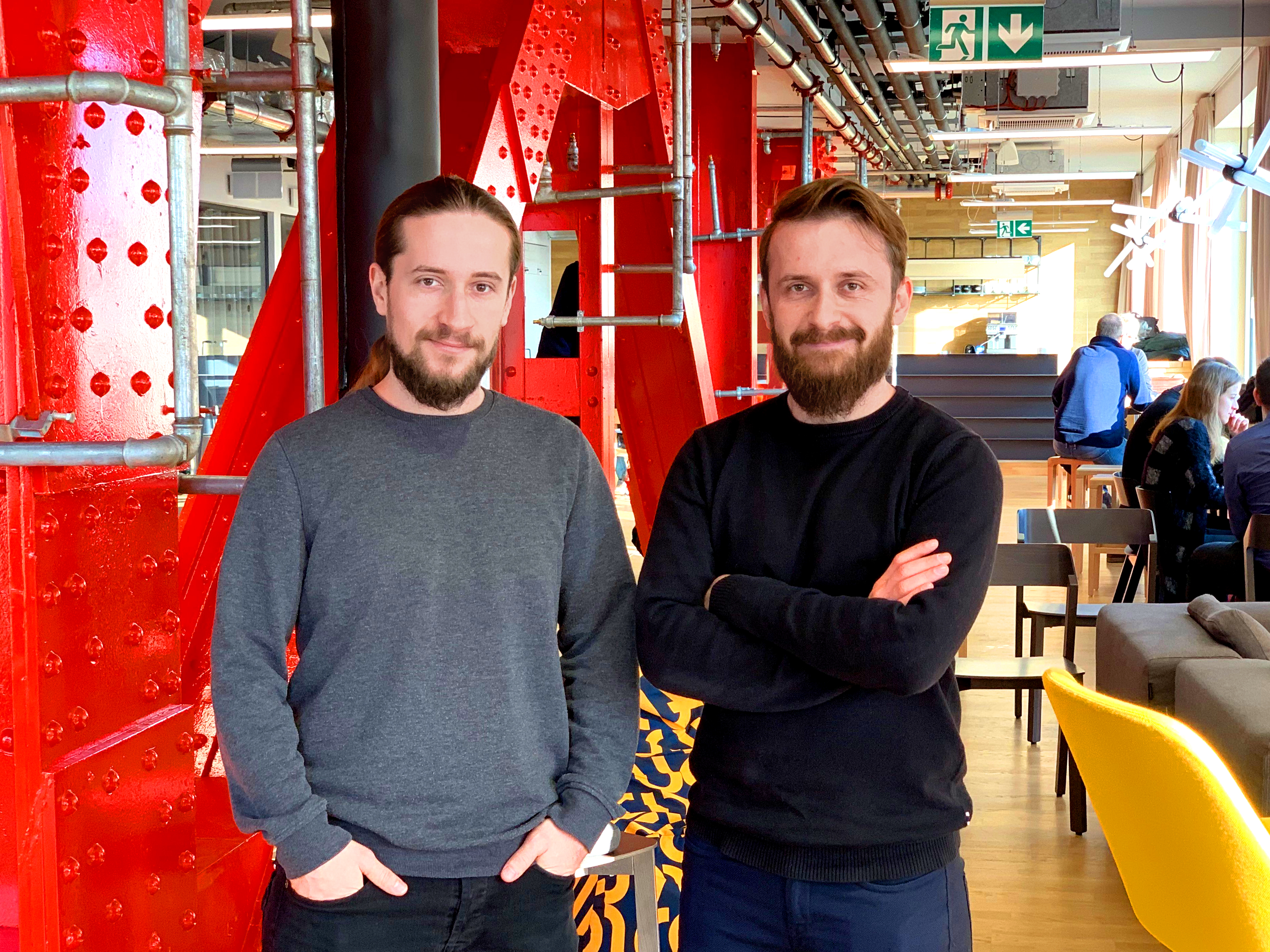
Today with him around I feel like don’t just make a team, but almost like a single body with a very well rounded strong personality.
But we’ve always heard horror stories of family members in business. So, first thing’s first: before we had started work, we had a serious family meeting, we sat down and got this all sorted out. We made sure to clear out who does what, and who is a decision maker. That way in less than two years, we doubled our design business revenue, started Symbolt, raised a small investment with this acceleration program while had only an idea, won on local startup events, and are crushing it every day!
Let’s talk more about your products. What would you say distinguishes you from other collaborative tools for designers? What is your “killer feature?”
We are actually adding intelligence to the revision process.
So today, marketing teams can probably add some annotations to a PDF, or what often happens: print out the pdf, draw on it, and then send it back to designers.
Collaboration tools have been heavily focused web and app design. We are focusing on long documents (multi-page ones).
I can already see some designer shouting at me, and feeling like the design industry is at risk due to this tool. Also that a software will never be able to make the right decisions on design, as a designer would.
I would argue that the idea behind Symbolt is to actually give designers the opportunity to dive deeper into design, and what design means, while actually giving the clients the ownership over the product that they buy, by being able to make their decisions on the copy they write anytime, and not only for a limited amount of time.
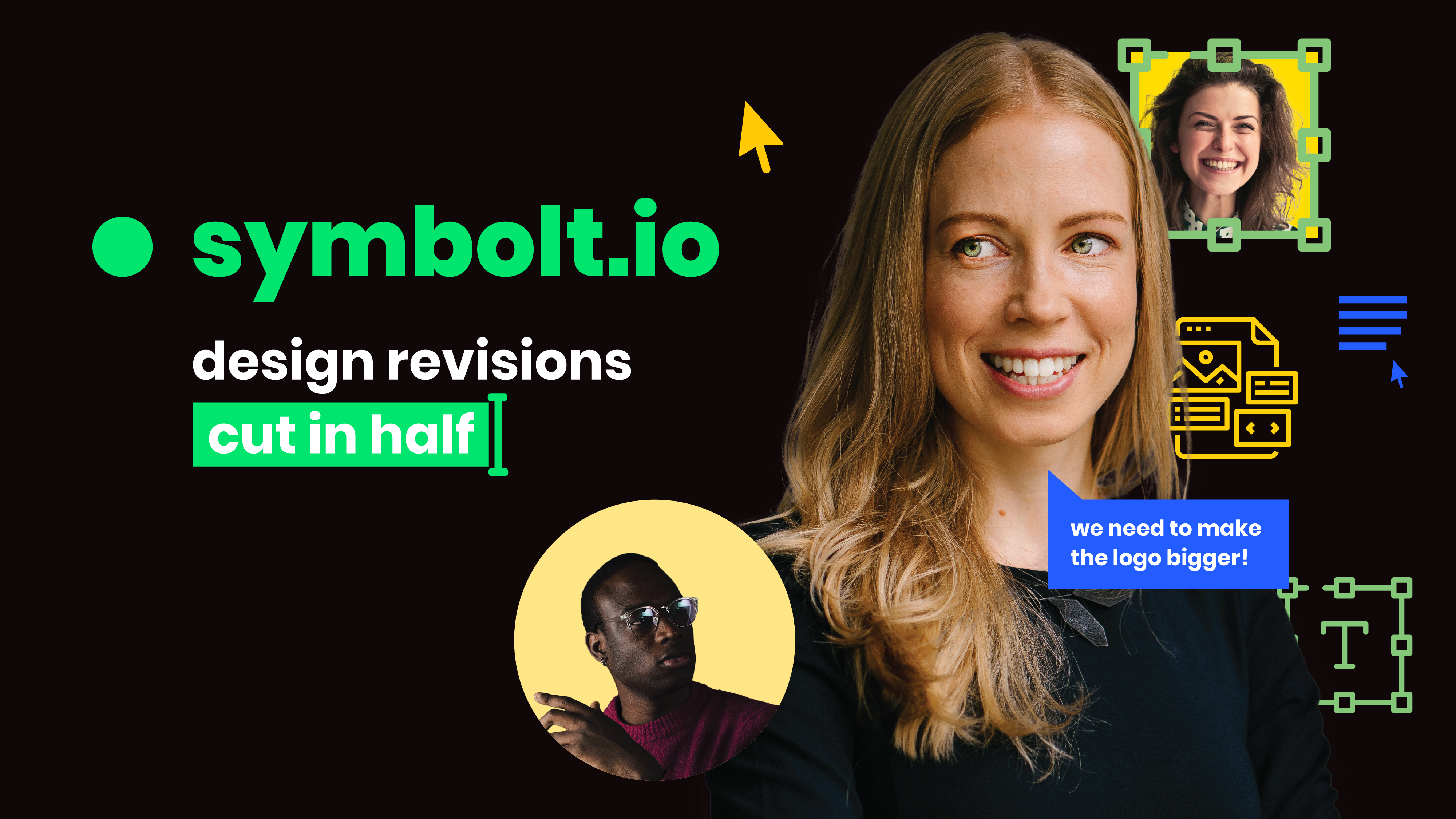
In the last decades we have seen designers thinking about the psychology of design, of the target audience, and of the useability of design more than they ever had to before. And that has mainly been the case due to the spread of design in the everyday tools that we are using. So Symbolt will only allow designers to shift more and more of their focus towards making the right structural decisions, while getting rid of mechanical tasks that suck the soul out of a creative thinker.
Thus, to get back to the question, as opposed to other collaborative tools out there, Symbolt proposes a new process to designing long documents, and deepens the ownership of the process to each party involved in it: the designer, and the client, or copywriter.
What have been your team’s biggest personal or professional challenges in making this project a reality?
There have been a few relatively large challenges that we’ve faced in the past few months.
I’d start with our backgrounds: none of us actually has a technical background. Building an intelligent software without a developer in the team is quite a big wall to break, as you can imagine. As a matter of fact, we are still on the lookout for a technical co-founder.
Took us a few months to find a team that would take the challenge of building this software, but we did it!
Then personally, well, I had never sold to large corporates before. The market we came from is relatively small, and a large company there would be considered max a medium one here. Understanding the sales within huge companies as we had to do in the past few months was one of the toughest things I have had to do in the past few years. And it still is a challenge.
At StartupYard I met with so many amazing mentors. Most of the conversations I’ve been engaging with them lately have been around negotiations, and maturity to be shown in meetings with these organizations. So it has definitely been an unbelievably steep learning curve for me.
I think at some point it’s even hard to say what the challenges are right now. We have both become like play-doh lately. We are being reshaped everyday into completely different people. I think only in a year’s time, or maybe longer, will we be able to look back and see what challenges we have overcome. Right now maybe we can’t even see how much we’re changing from all the volume of work that we’re doing.
Who is the ideal customer for Symbolt? What do people need to get started with Symbolt?
There are two very specific groups that Symbolt is ideal for:
Marketing teams that have to wait forever for a single change on a designed document. Or if they are producing their own branded materials.
And Graphic Designers that need quick turn-around time on layout projects and want to get rid of unpaid and head-breaking copy revisions.
For designers, it’s pretty straight-forward. Create an account, and start using it. Only pay when they like the results and are ready to download their final PDFs.
For marketing teams and larger companies, we’re providing the possibility to input all their branded materials so that they can quickly and easily access them and produce as many as needed without the direct need of the back and forth with the agencies, or designers. So obviously, there is a set up time involved.
Has there been a major surprise for you since joining the StartupYard program? Did you learn something you weren’t expecting to?
The whole thing was a surprise! We thought we’d get a little money to get us going, and maybe a contact or two by coming into a new environment. But boy were we wrong!
We mentioned the negotiating ability with large companies. That’s NOT an easy skill to come by. The ability to just so easily communicate what we’re doing, and have my doors open to anyone we could think of. Most definitely we’re sure we can’t frame all that we’ve learned here, but it is already apparent that our whole mindset has completely shifted to something we had not experienced before.
Meet Piixpay: Instant Crypto to Fiat Conversion
/in Interviews, Startups, StartupYard News/by StartupYardPiixpay is the first startup from Estonia attending our program. For the past 3 years, Piixpay has built a payment infrastructure to make the bridge between crypto and fiat as easy as a bank transfer. Transacting in crypto-currency can still be difficult and the volatility might deter a few companies from accepting crypto-currencies as payment vehicles but Piixpay has solved this by allowing real-time conversion to fiat..
Initially used by individuals to convert their crypto, Piixpay now sees more and more interests from eshops and crypto companies (exchanges, wallets) alike.
We sat down with Hannes Kree, the co-founder and CEO of Piixpay to discuss more about how Estonia is positioning itself as a crypto nation and how Piixpay intends to be a major player in the payment industry.
Hi Hannes! Tell us a bit about your personal journey towards founding Piixpay. How did you get here?
Initially, together with my partner, we launched a mining facility in 2014. Little-by-little we realized that we cannot hold all our crypto profit as we had to pay bills, which are of course in EURO.
We used exchanges to convert our crypto to Euros but our orders filled dead slow. On top of that, as the market volatility grew, and prices fell – we were losing money. We had to find a solution to make simple crypto-to-fiat payments.
And this is how Piixpay was born, where we do crypto-to-fiat transfers instantly and securely.
The instance and security are our focus from day one. No more exchanges, no more waiting, simple Euro payments with crypto just like your regular bank.
Moreover, it came really from our personal needs and it turns out that others share the same need. Now, with growing users we are at full speed.
Our long-term vision is to create a simple bridge between crypto and fiat with our infrastructure products. Imagine a platform where users transact in whatever currency they like and store their wealth like a modern crypto-bank
How long have you been involved with crypto and how has the landscape changed in your mind?
I started in 2013 when I bought my first mining machines. Back then, crypto was considered a hobby. The community was small and there were not many channels to gather information. Bitcointalk was one source, and some of our Estonian mining crowd. I believe crypto really got mainstream in 2016. This is when the technological and investment ecosystem really developed. It was the time when cryptocurrencies came out of the cellar.
Bitcoin especially stopped being connected only with Black markets. In 2017, during the ICO Boom, we saw a huge generational move. You see, we live in a very much digital penetrated society, soon ruled by young people. Nowadays for Millennials, crypto is the native asset to store value and transact.
On the other hand, Blockchain technology was recognized on a high corporate level. It is evident how much has been built for the past 2 years. We also see that some governments are embracing it and making regulatory frameworks. Of course, It’s not all rainbows. Cryptocurrencies are still used for ransoms etc. But nevertheless, the community and technology matured, and I think this is just the beginning.
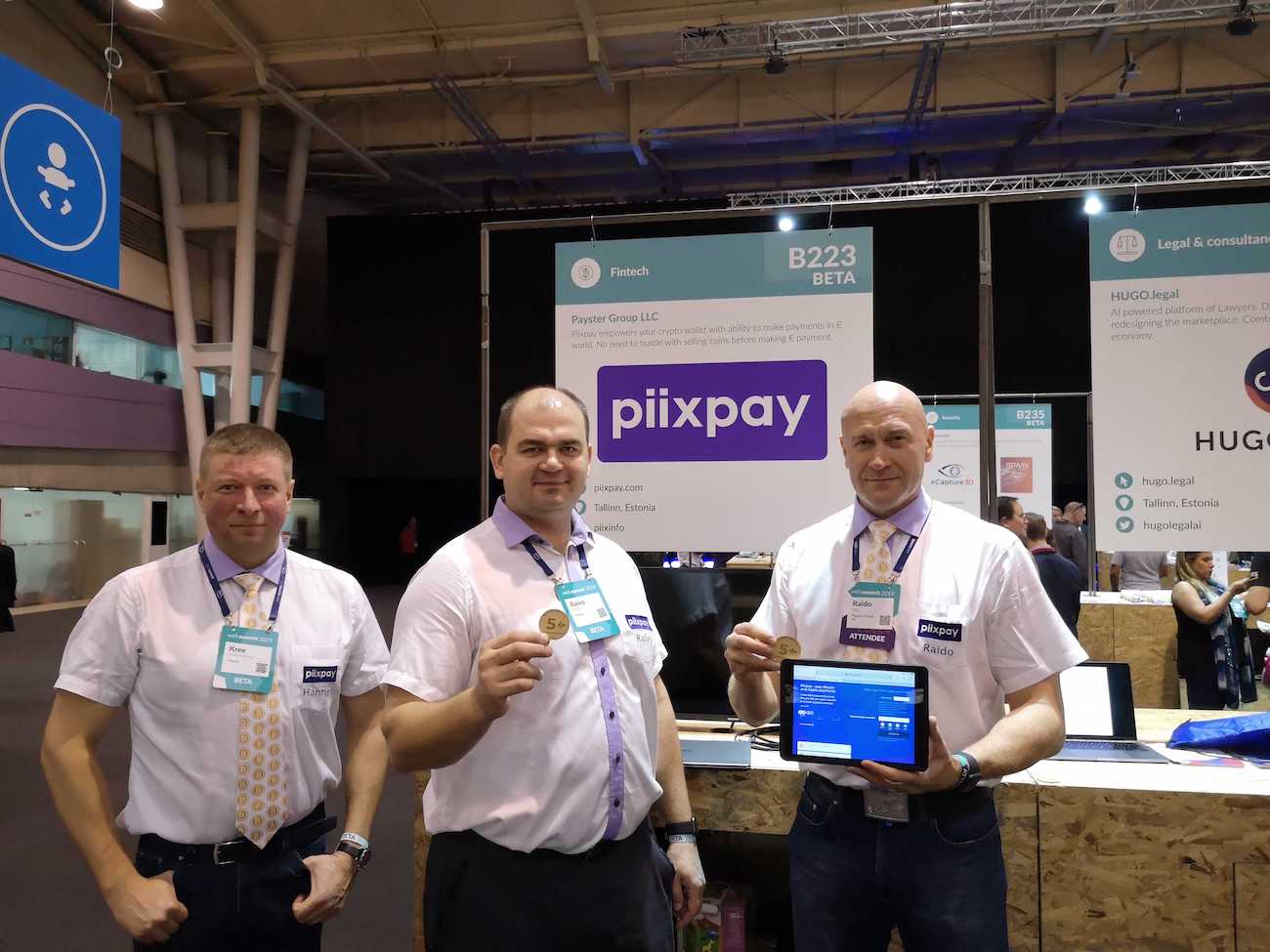
The Piixpay Team
You are from Tallinn, Estonia. Why are so many crypto companies coming from the Baltic countries?
I believe the case, especially for Estonia, is because of our e-government. 98% of Estonian services can be done online. With a combination of good IT talents and legislation, this gave a green light for many crypto companies. In fact, many acquired crypto licenses. That’s all good, but soon they have to comply with the new regulations. The good news is our Financial Inspection is working closely with the Estonian Cryptocurrency Association. We take an active role there to steer the dialogue into a fair and prosperous environment for blockchain startups.
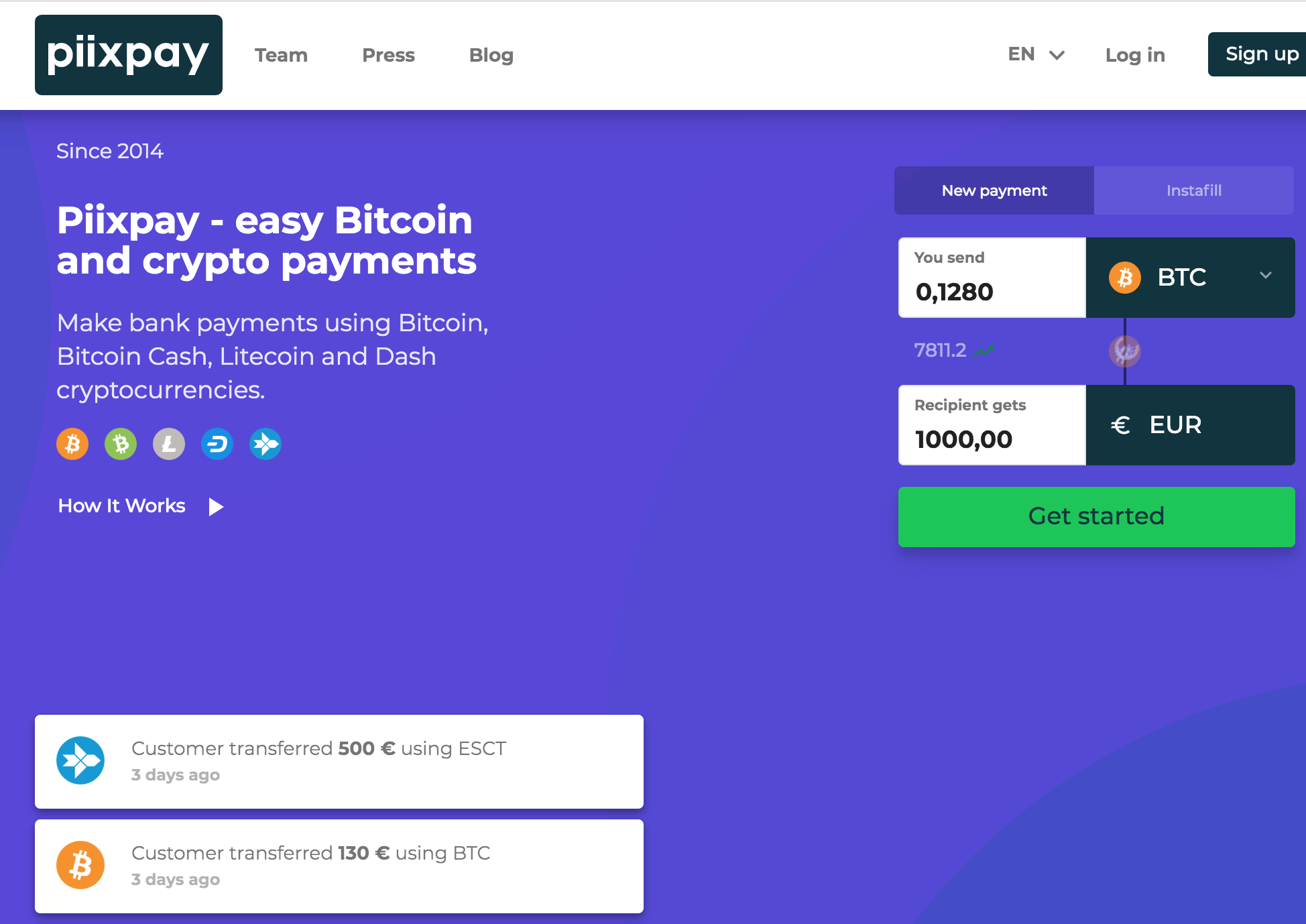
The Piixpay interface
What prompted you to start developing Piixpay? What did you see as fundamentally wrong with the way crypto to fiat payment work online right now?
We saw several problems and inefficiencies in the crypto-to-fiat payments.
Here are the two main points.
Firstly, customers find it difficult to transact with service providers. This is because those service providers don’t accept crypto.
That leads to another problem. These customers have to find a proper exchange to convert.
Let’s see they found it and now they have FIAT in the exchange. Now they need to make a transfer. But they are realizing that they cannot make transfers to 3-rd parties. And even if they do that leads to another problem, which considers banks. These transactions are automatically flagged as suspicious and now the customer is facing suspension. You see it’s a chain of events which show how the crypto and fiat world are divided. Not to mention the many unbanked people any cannot find any stable currency they can transact with you.
Which leads to my second point. Why service providers don’t accept crypto – it’s simple, it’s too volatile. How much did the Bitcoin price change per day? It goes up and down all the time but businesses want stability.
And this is where Piixpay comes into play. We allow the customer to pay the providers with crypto (Bitcoin, Ethereum… you name it) and on the other end, businesses receive and store EURO.
This is all done in a convenient experience for the customer and in a fully regulated and safe environment.
Tell us more about your team. Why are you a good match for this project?
We have known each other for many years and our friendship started before we decided to become colleagues. We have complementary skills and have been in crypto since 2013. Our technical lead has been developing security software for big Telcos. From AML/KYC we have one of the best intelligent officers in Estonia with vast experience with banks. Finally, we have a dedicated sales and business developers with international experience. This is crucial if you want to develop a world-class product.
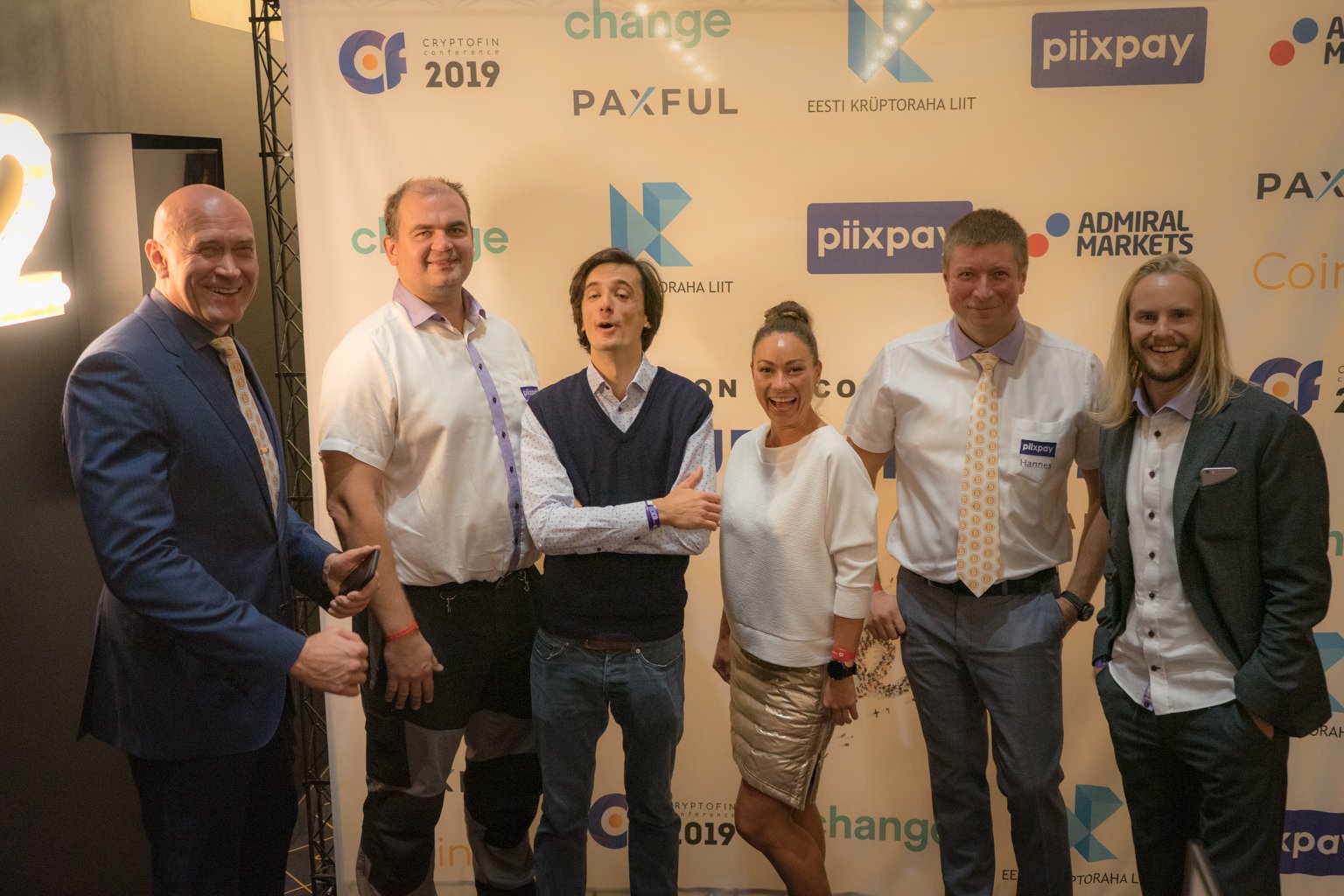
The Piixpay team
What have been your team’s biggest personal or professional challenges in making this project a reality?
In the beginning, we had legal problems since cryptocurrencies and blockchain technology weren’t understandable. After overcoming this we had to build a top-notch security system. That meant that we need dedicated servers and autonomous power. Now, I am proud to say we achieved the highest level of security without hindering our customer experience.
What do people need to get started with Piixpay?
Just go to https://www.piixpay.com and sign up. Registration and KYC are quite easy. In no time you will be able to make your first transfer.
Who are your customers today and what kind of volume have you processed in 2019?
We processed around 20 Million Euros last year. This is another record for us.
As for customers, we see two main groups.
Private ones.
– Individual traders and crypto holders
Business clients include;
– Miners,
– Wallet providers
– Blockchain Developers
– Gaming Companies.
Also, we see start to see interest from institutional investors and hedge funds.
What do you think is the biggest problem right now in the crypto market, and how does Piixpay help solve that issue?
I see as the biggest problem the interoperability both in crypto and fiat world, but also on a protocol level. By that I mean that still, crypto is not quite streamlined to the traditional financial system. And on the protocol level, the connection between chains is not good, not to mention the connection to external systems.
I can also add to that the lack of education and misconception. For instance, people still consider Bitcoin a scam. But it’s all math there, a protocol just like the internet. This is very needed to be communicated in order to see mass adoption.
As mentioned previously, we want to make Piixpay a crypto bank. A place where businesses and consumers will transact freely. This is how we are solving the market issues.
You are for the first time in an accelerator. What did you expect from the experience, and how has that compared to reality? What has been your biggest challenge in the program?
Essentially, the program was very useful for us in several verticals.
Firstly, we connected to the CEE Blockchain ecosystem. Furthermore, we established vital relationships with investors, while preparing for our next round.
I think one of the key aspects is that the programme is intense but not *too* intense, giving us space to develop our ideas, follow up on business opportunities and run our business as usual as much as possible. Some of the encounters with mentors are leading to large e-commerce players which is very important for us to scale. Finally, we love the StartupYard team and Cedric’s sense of humour.
Meet Qoobus: The OS for the Freight Industry
/in Interviews, Startups, StartupYard News/by StartupYardQoobus is the first startup from the Republic of Moldova to make it into the StartupYard program. Qoobus is a LogTech company that provides transportation companies and their clients with the best freight and transportation solutions to make their operations more efficient, secure and transparent.
A 3 trillion market in Europe alone, the logistics industry is experiencing disruptive innovation rapidly. We sat down with Mihail Cernei, the founder and CEO of Qoobus. Mihail has been working in the freight industry for the last 10 years and being an innovator at heart saw how to make the life of truckers and shippers easier. Qoobus was born.
Hi Mihail! It might surprise people to learn that you were originally a lawyer, before getting into the logistic industry and founding Qoobus. Can you tell us about your journey?
Actually it might sound even more surprising but I also have a CMA ( Certification in Accounting and Audit). It was something I needed to combine with my law practice when consulting corporate clients on their financials and legal issues.
Talking about my venture in the logistics industry, I can say that it was a pure accident.
In late 2009 a friend of mine convinced me to invest in a transportation company. It was quite an encouraging time back then, 2008’s financial crisis was ending, ecommerce was booming and it was pushing the transportation industry to be faster, and more efficient than ever before. In some ways I was sure I invested in the right direction. But my ideas about it changed, when I found out that things were not going so well inside the company.
From one side, the company was growing at a fast pace but on the other side it just could not sustain its own growth. Because of lack of technology and market visibility it was being run un-efficiently, we were operating at very low margins and every mistake was hitting us “like a truck” financially. It was a real struggle.
It took us four long years to finally stabilise the company by developing and implementing an inhouse technical solution to manage all the workflow, from client acquisition, to transportation management and payment optimization. At that time, I realised that we were not the only ones having this problem and that our solution was applicable to the whole SMB (small to medium-sized businesses) transportation market.
So around late 2014 we started developing our first concepts of what later we called Qoobus.
Are you saying the desire to help others is at the core of Qoobus?
I think back then, we did not know much about technological disruption or revolution. We, as a team, were emotionally driven and having that feeling of successfully helping somebody was our main motor to drive us into this venture. But it was a no brainer to apply all the knowledge we had, into a product that had very deep disruptive potential even in that “just an idea format” we initially were brainstorming on.
What did you see as fundamentally wrong with the transportation industry?
It’s a highly fragmented sector, composed of hundreds of thousands of businesses (SMB), varying enormously in size, that are moving billions of freight of widely varying sizes and weights on a myriad of possible routes. It’s an industry using “backbone technologies”, stuck in piles of paper, fax machines, e-mails or in closed data silos.
Given the scale and complexity of the freight transport system, it is just impossible to analyse and understand it in the absence of large statistical databases.
It’s like a linked chain of events. A lack of technological evolution and adoption, leads to a lack of automation, that leads to a lack of Big Data that leads to lack of transparency.
For us, “logistics is just broken”.

The Qoobus Main Interface
What are you trying to accomplish with Qoobus that you think no other platform has been able or willing to do?
First of all, Qoobus at its core, is a state of the art Artificial Intelligence freight matching engine, built on the latest available technology, not only to connect freight demand with supply but to also predict it by using big data. This enables us to empower SMBs logistics & transportation companies to operate efficiently in the market.
Exactly the contrary of what big industry players are willing to do. Most of them are keeping it as complicated as possible by enabling layers and layers of legacy IT infrastructure and rigid processes that are hard to transform into the cloud-age.
When we started building Qoobus we had only one thing in mind – to make life easy for truckers and their clients.
Consequently, we are changing the rules of the game. It is no longer “the big eats the small” but rather “the fast eats the slow”
What have been your team’s biggest personal or professional challenges in making this project a reality?
Taking aside the financial factor that usually makes it hard for any startup in its initial stages, I’m convinced that the biggest challenge we had as a team was to learn to completely trust each other, be united and stick together.

The Qoobus team
For our readers who are not too familiar with the freight industry, why do you think we are seeing so much innovation happening. What is driving this innovation?
Let me put it like this, transportation is the world’s second largest industry. All of its branches combined, generate a global market worth 7 Trillion Dollars a year and it’s an industry in growth mode. But also transportation is one of the most outdated industries in terms of technology.
A strong digital DNA is a prerequisite for corporate success in the 21st century. However, to date, the majority of industry players still work with largely manual processes, relying on phone, fax, spreadsheets and e-mails. Using such “backbone technologies” means that its results are by definition slow, error prone, not exponentially scalable and come at high costs per unit.
Future industry players will be those who understand how to exploit technologies such as cloud based services, IoT/sensors, predictive data analytics and blockchain.
Lack of digital DNA in this industry is not a secret, so everyone is well aware of these problems and of course there are a lot of startups trying to innovate it. In fact there are so many startups doing it, crying disruption, innovation, revolution that it got to the point of a “kid crying wolf”; it’s not raising eyebrows anymore. Disruption has been mentioned one too many times.
Both enterprise and SMB customers nowadays expect to get shipments delivered faster, more flexible and with a higher degree of transparency at a lower price — like the “Consumer Market” did 15 years ago, driving the fundamental digital disruption that has happened to the travel & taxi industries.
So answering your question, yes, there is a lot of innovation but most of it failed. Because of too many reasons, maybe because it was addressing the needs of the big industry players instead of the ones that actually need it, we will never know.
But don’t get me wrong there will be a disruption in this industry in the very near future. A revolution so big that it will change everything, it will be a fundamental disruption.
How many clients do you have today and in which countries are you seeing the biggest interest?
We started with operations in the Republic of Moldova in mid 2017 and naturally expanded to the Romanian market in 2018. At the moment we are expanding in countries like Belarus, Ukraine, Lithuania, Estonia, Latvia. We should be hitting the 9,000 Registered Companies mark as we speak. The biggest interest doesn’t come from companies based in particular regions, but from companies that happen to be in a certain stage of their development. Our core user base is mostly small to medium-sized businesses.
What do you hope Qoobus is going to be in 5 years, as a business, or as a technology? What would be your ideal scenario?
In an ideal world, our vision of Qoobus being the one stop shop freight marketplace should be materialised. By then we would have an army of partners all over the world and with our services we would be strong and viable enough to offer SMB transportation companies and their clients a platform where they can interact and do business with ease, in complete transparency.
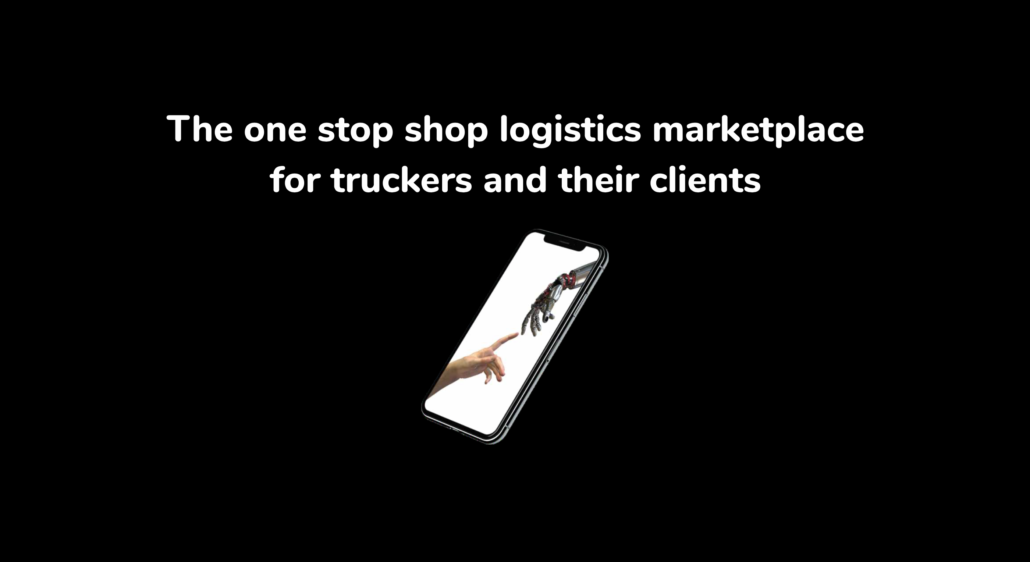
You’re based in Moldova which geographically and historically is a very multicultural country. Are there particular quirks about the Moldovan market or culture that you would say give your company an advantage or a fresh perspective?
Being based in Moldova mostly helped us gain valuable know-how of western and eastern ways of doing logistics. When it comes to doing business we are very flexible because of our understanding of western and eastern european culture. But I would say that our biggest advantage as a team, as a company, doesn’t come from our geographical location or our multilingual capabilities. It comes from us being at the right age to have seen and experienced the world without the power of the internet to actually being part of the internet revolution.
Has there been a major surprise for you since joining the StartupYard program?
Actually the whole StartupYard program was a surprise for me, every single bit of it. I found it to be very challenging at first but then, with time, I progressed on a personal and professional level. It really is an accelerator, meant to accelerate things and challenge you to achieve your milestones.
Meet the Batch 11 Startups : DemoDay February 19th
/in Life at an Accelerator, Startups, StartupYard News/by StartupYardIn Their Own Words: Zsolt Mathe-Laszlo, CEO Soldigo
/in Interviews, Startups, StartupYard News/by StartupYard“In their own words” is a series of interviews with some of our alumni about the stage they were when they joined our programme and where they are now.
Today, we are joined by Zsolt Mathe-Laszlo the CEO of Soldigo, which allow anyone to run an e-shop on multiple channels simultaneously without the need for coding.
At what stage were you when you applied for StartupYard?
When we applied for StartupYard we were at a very early stage of our startup. We had an MVP and a few clients and we thought that we would change the world but I had a feeling that something is missing from our company. This was the knowledge of running a business.
At what stage are you now?
At the moment we have a fully working online store creator platform and marketing toolset and hundreds of paying customers. We are a team of 5 people.
How much money have you raised since leaving StartupYard?
We didn’t raise any money since leaving StartupYard. We were focusing on market our service. Maybe in the future we will start to raise funds.
How many jobs have you created so far? What kind of jobs?
We created five jobs so far: customer support, designer, frontend developer, backend developer and sales manager.
What has been the most challenging experience when growing the company?
The most challenging experience when growing the company was hiring the team. We wanted to have a team who doesn’t follow the traditional 8 hour/day workflow. Our approach is that you should work as much as you wish but be effective.
What are you the most proud of so far?
So far I am most proud of the fact that our team is working very well together. We had our ups and downs, changed a few team members, but at the end of the day we put a good product on the table.
How did StartupYard help you?
StartupYard opened our eyes. We wanted to create a platform for everybody but as soon as we participated at StartupYard, we realized that we needed to focus on one niche and try to help them. Since then we are focusing mostly on handcrafters and fashion designers. Occasionally we have other types of clients as well but most of our clients are from the creative world.
What would you say to someone who hesitates to apply for our next program?
Do your business a favour and apply. You will see your product from a whole new perspective and you will benefit from more than 100 feedbacks that will shape your business into what it needs to be.
In Their Own Words: Tomas Gogar, CEO Rossum.ai
/in Interviews, Startups, StartupYard News/by StartupYard“In their own words” is a series of interviews with some of our alumni about the stage they were when they joined our programme and where they are now.
Today, we are joined by Tomas Gogar the CEO of Rossum.ai, which automate data extraction from documents with Artificial Intelligence.
At what stage were you when you applied for StartupYard?
When we applied to the StartupYard we had just a lot of technical experience and knowledge of how the document understanding works. However, we had no idea how to build a product, find customers and run a business in general.
At what stage are you now?
There is now a team of 50 people working on our mission. Our technology is used by customers from all around the world – currently covering 4 continents. We proudly automate manual data entry for customers of various sizes – from promising startups to Fortune500 companies.
How much money have you raised since leaving StartupYard?
Unfortunately, I cannot disclose that now (stay tuned, by the time you read this, the answer is maybe out).
How many jobs have you created so far? What kind of jobs?
Around 30 full-time employees and 20 part-time. Obviously, our company was always full of programmers and machine-learning researchers. However, as the product matures our marketing and sales teams are getting bigger and stronger. And as we grow, operations and HR become an important topic as well. We’ve also introduced a completely new type of job “AI teacher”, those are very important people for Rossum because they train Rossum’s artificial intelligence to understand documents.
What has been the most challenging experience when growing the company?
There were (and will be) a lot of challenges but I’m lucky to have two amazing co-founders. Each of us takes care of a specific topic and it is difficult to say which one is the hardest one. For me personally, finding the right go-to-market approach and building the sales machine is the surprisingly fascinating challenge. It’s very surprising how the engineering approach helps in this field as well.
What are you the most proud of so far?
Of our team, no doubt. We’ve already solved a lot of challenges together and I know that a lot of other challenges are still ahead.
Without all the people, Rossum would be a just a logo, website and some source-codes … that wouldn’t have value for me.
How did StartupYard help you?
It’s simple – Rossum was born there 🙂
We had no idea how to use our tech when we joined StartupYard. We were that kind of technology-first group of people, we admit that. Thanks to StartupYard we managed to find the problem that needed to be solved and needed our skills.
What would you say to someone who hesitates to apply for our next program?
3 years ago, I was the most hesitant person from our team. I don’t know what would have happened if we didn’t join. But I really like what we are building now and I know that getting feedback and learning from other people is extremely important. During the last 3 years, we received good feedback as well as the bad one. We heard great bits of advice as well as the bits that didn’t work out. But I believe that getting any feedback is helpful because it shapes your vision, your point-of-view. StartupYard was a great starting point for that.

 Photo by
Photo by 